





Benefits and Pension Monitor’s special reports provide an expert-collated resource for the industry when looking for best-in-class partners and the most revered service providers.
The special reports also provide an opportunity to honour the top companies and individuals in the industry for their hard work and commitment to innovation. In 2025, BPM will produce a comprehensive portfolio of special reports covering a plethora of topics and agendas that are top of mind for professionals and most pertinent to the industry.
• Hot List
• Top Benefit Providers
• Top Employers

If you would like further details on how to be involved, please get in touch via email at sophia.egho@keymedia.com.









m I going to be ok?”
When it comes to money, we all crave the answer. Will I be able to pay the mortgage? Will I go broke in old age? Can I afford to send my kid to college? In modern parlance, this is often referred to as financial well-being – and it should be top of mind for every plan sponsor.
Financial well-being essentially boils down to how well someone manages their money – whether it’s day to day, dealing with unexpected events, or planning for retirement. Healthy financial well-being means less stress, increased resilience, and peace of mind.
Employers should know that the negative correlation between financial stress and employee productivity is strong. The Financial Consumer Agency of Canada reported that, for an organization with 200 employees, employee distraction because of financial stress could cost a company just over $200,000 a year. The Agency also revealed that 43 percent of employees say financial stress impacts their workplace performance.
“Am I going to be ok?” Hard to answer at the best of times, let alone when trade tariffs threaten industries and jobs
Why is this relevant now?
This year alone employees have been subject to stories about the increased cost of living, while house prices make wealth-building prohibitive for many. Personal finances are more complex, too. The average person works for multiple companies and defined benefits plans have been decreasing for years.
The US–Canada political relationship is currently combative, raising anxiety levels.
“Am I going to be ok?”
Hard to answer at the best of times, let alone when trade tariffs threaten industries and jobs. Even holding US equities in your retirement portfolio may soon incur hefty tax hikes if President Donald Trump has his way.
Demographic changes have also added complexity. There are more divorces, more blended families, and we’re all living longer on average. The fear of outliving your money has arguably never been as intense.
More positively, financial advice has also changed. Employees used to need help building a portfolio; now anyone can buy a balanced portfolio ETF with a click of the mouse. The value advisors bring is planning, whether it’s tax efficiency, retirement planning, or preparing for other major life events.
“Am I going to be ok?”
Getting a straight answer is not easy. For plan sponsors, what better way to enhance your benefits package than by providing access to financial planners? Imagine the well-being and liberation employees could feel from getting answers. Confidence in personal finances equals confidence in life and at work.
James Burton, managing editor
EDITORIAL
Managing Editor James Burton
Senior Editor David Kitai
Journalist
Josh Welsh
Senior Sponsored Content Writer Manal Ali
Lead Production Editor Roslyn Meredith
Production Editors
Christina Jelinek, Tara Tovell
ART & PRODUCTION
Art Director Marla Morelos
Designer Noel Avendaño
Production Coordinators
Kat Guzman, Loiza Razon
Customer Success Coordinator Gail Baes
Vice President, Production Monica Lalisan
SALES & MARKETING
Vice President, Global Sales (Wealth) Abhiram Prabhu
Business Development Manager Doris Holinaty
Account Manager Michael Hughes
CORPORATE
President
Tim Duce
Director, People and Culture
Julia Bookallil
Chief Revenue Officer
Dane Taylor
Chief Information Officer
Terry Szames
COO
George Walmsley
CEO Mike Shipley
EDITORIAL ADVISORY BOARD
Celine Chiovitti, OMERS
Katie McNulty, CAAT Pension Plan
Greg Hurst, Greg Hurst & Associates
Kevin Minas, Mawer Investment Management
Jim Helik, James Helik Consulting
Tim Clarke, tc Health Consulting
EDITORIAL INQUIRIES
james.burton@keymedia.com
SUBSCRIPTION INQUIRIES tel: 416 644 8740 • fax: 416 203 8940 subscriptions@keymedia.com
ADVERTISING INQUIRIES
Michael Hughes michael.hughes@keymedia.com
Doris Holinaty doris.holinaty@keymedia.com tel: 416 644 8740
8740 www.keymedia.com

WEALTH PROFESSIONAL james.burton@keymedia.com
Copyright


Canada’s leading source for news, analysis, and insights for professionals in the benefits, pensions, and institutional investment space

• Industry expertise – Stay informed with expert analysis on emerging trends, regulatory changes, and investment strategies
• Daily updates – Access fresh news through e-newsletters, a comprehensive website, and a print magazine
• Exclusive webinars & events – Engage with thought leaders and gain insights from cutting-edge conversations
• Investment & governance insights – Learn about innovative governance models and risk-aware investment approaches
• Financial well-being resources – Discover strategies to improve workplace financial wellness and employee benefits
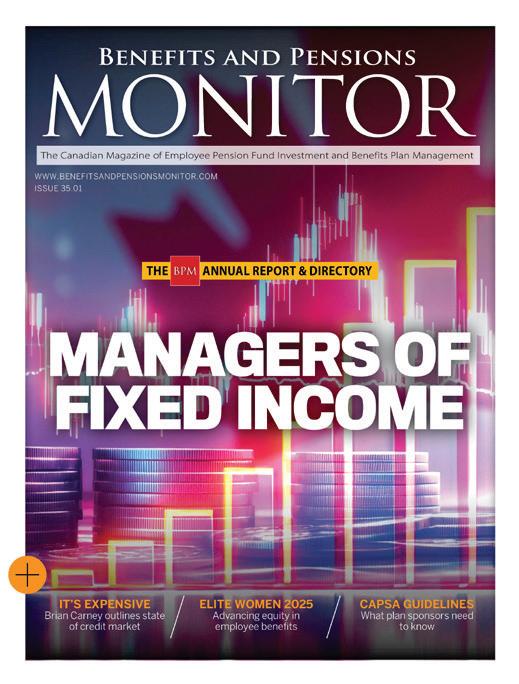





Minimum wages in some provinces remain under $16/hour – less than half the $35.99 national average hourly wage – shaping employer strategies around salary budgets and benefits offerings.
Grief affects focus, health, and finances – workers face the severe toll the “grief tax” takes on their productivity, daily functioning, and overall well-being.

Majority
Source: Statistics Canada. (2024, October)

Most employers offer EAPs, but only a fraction of employees understand or use them – hindering access to mental health, wellness, and legal resources despite high satisfaction rates.
Four in five employers offer EAPs, but barely one in five employees understand them.
Most Gen Zers delay serious financial planning until after age 30 and spend more time on digital leisure activities like watching TV, streaming movies, or browsing

Faced with growing demands and rising claims, Canadian employers are choosing to expand coverage rather than cut, but risks remain
MORE THAN half of employees today are millennials and Gen Z, generations that approach health, work, and well-being with very different expectations. Subsequently, the traditional workplace benefits plan –a bundle of basic health coverage, a few add-ons, a largely one-size-fits-all design –feels increasingly out of step with reality.
At Canada Life, the signals of change are everywhere. “People want plans that reflect who they are, not just a standard package that assumes everyone is the same,” Jeffrey Marshall, senior vice president, product and workplace solutions strategy, emphasizes.
Rethinking how benefits deliver value
The good news is that employers are responding. Rather than cutting back, many plan sponsors are expanding coverage to meet a broader set of needs, even in a challenging cost environment. In a post-pandemic world, flexibility and personalization have shifted from nice-to-have features to competitive essentials.
Mental health support has become essential for more than 6.7 million Canadians. Fitness spending has also nearly doubled over the past two decades, with preventive care beginning earlier. Together, these trends reflect a growing emphasis on holistic well-being that prioritizes both physical and mental health.

At the same time, demographic shifts are transforming the workforce. Immigration is also redefining organizational culture and employee expectations. One in three employees were born outside Canada, bringing a broader range of cultural needs into the conversation. Adding complexity, over one million Canadians over the age of 65 are still working, creating a new demand for benefits that fit later life stages.
According to the Benefits Canada Healthcare Survey 2024, 34 percent of Canadian sponsors added or enhanced at least one benefit in the past year, a sharp rise
compared to previous years. Meanwhile, only 10 percent reported removing or reducing coverage. The impulse is clear: organizations recognize that richer, more personalized benefits are no longer optional if they want to stay relevant.
Marshall believes the industry is entering a decisive period. “There is a real opportunity here for sponsors to rethink how they deliver value through benefits, but it has to be done intelligently, with an eye on longterm sustainability.”
The old blueprint is out. Building benefits plans that match today’s workforce will
require flexibility, smarter wellness strategies, and a sharper focus on balancing value with financial durability.
One of the most visible changes to the modern benefits plan is a deeper focus on flexibility. Employees are increasingly looking for plans that allow them to prioritize their own needs, whether that means fertility support, mental health counselling, or preventive wellness tools.
In response, Canada Life offers Health Care Spending Accounts (HCSA) that allow members to allocate employer-provided funds toward services that matter most to them. Rather than stretching a traditional plan to cover a growing list of specific services, HCSAs give employees a personal budget to manage their health choices. Since the pandemic, interest in these accounts has steadily grown among sponsors looking for ways to provide broader support without escalating costs or increasing claims volatility.
Marshall points to the enhancements coming to Canada Life’s HCSA offering as an example of continuous improvement in action. The company is streamlining the claims experience to reduce the burden on members and introducing better visibility into account balances. Future updates will allow instant claims decisions, making the process faster and less cumbersome for plan members.
Flexibility is also being expanded through referral programs that connect members to discounted services in areas like family-building, estate planning, and credit counselling. These arrangements extend the value of a benefits plan without significantly raising sponsor costs.
Delivering an experience that matches changing expectations
While flexibility addresses the “what” of benefits, experience shapes the “how.” For a generation of workers accustomed to fast, seamless
digital service in their personal lives, benefits plans need to meet that standard.
Canada Life is committed to continuously improving digital platforms such as My Canada Life at WorkTM, allowing members to manage claims, access plan information, and receive reimbursements more quickly. New initiatives like its sponsor portal and provider portal are also under way, giving employers and healthcare providers faster, more efficient ways to coordinate care.
Behind the scenes, the company is deploying artificial intelligence platforms such as DAISY, an AI disability tool, to predict claim durations and proactively support better recovery outcomes. Marshall

Sponsored by
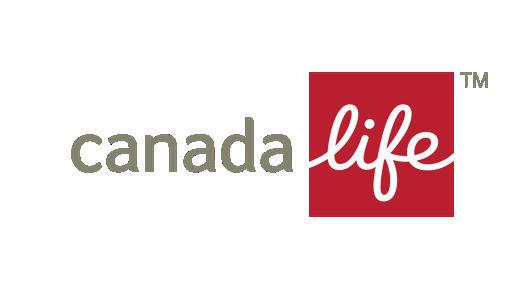
Marshall sees drug plans as one of the biggest pressure points. As the drug market evolves, the risks are shifting from rare, high-cost treatments to more common, medium-cost drugs that can quietly drive up plan expenses.
Canada Life is adjusting its drug management strategies to help sponsors futureproof their plans. This includes developing new product options that cover certain higher-usage drugs with co-insurance or cost-sharing features, rather than blanket coverage that could leave plans exposed to unsustainable increases.
The company is also emphasizing proactive well-being management. With more than
“People want plans that reflect who they are, not just a standard package that assumes everyone is the same”
Jeffrey Marshall, Canada Life
notes that mental health, now one of the leading causes of disability claims, is a particular focus. “Helping employees return to work successfully after a mental health leave is not just about the right coverage – it is about having the right processes in place to support recovery,” he says.
Supporting newcomers is another priority. Canada Life’s Welcome Plan offers interim health protection for employees new to Canada or returning after time abroad, ensuring they are not left vulnerable while waiting for provincial coverage to take effect.
While enhancing benefits to maximize flexibility and experience is critical, sponsors cannot afford to lose sight of the cost realities facing their organizations. Sustainability is becoming the silent backbone of every decision around benefits design.
half of Canadian plan members living with at least one chronic condition, helping people better manage their health could lower the risk of more serious claims down the road. Canada Life’s well-being suite, including the newly launched Health and Wellness Centre, equips members with resources to understand and improve their health before small issues become major problems.
“At the end of the day, a sustainable plan is one that evolves with its members,” Marshall says. “It cannot be locked in a version of the past that no longer fits.”
Canada’s workforce is not standing still, and neither can the benefits industry. The next generation of plans will be shaped by flexibility, better experiences, and a cleareyed view of sustainability.
For sponsors willing to rethink old assumptions, the path forward is full of opportunity – but for those who hesitate, the risks are only growing.
Health Commission of Canada’s work has allowed employers to thrive, says impassioned CEO
MICHEL RODRIGUE has made it his lifelong mission to end the mental health stigma once and for all. As CEO and president of the Mental Health Commission of Canada (MHCC), he’s spent the past decade challenging long-standing stigmas, building inclusive mental health frameworks, and advocating for the oftenoverlooked demographic of middle-aged men. But his mission isn’t just rooted in theory, it’s also personal.
“My interest in this space is born out of losing a dear friend to suicide 20 years ago. He had a loving family, two young daughters, it was a devastating experience,” he said. “Men’s mental health is something that’s near and dear to my heart.”
Rodrigue believes that generational conditioning plays a central role in how men perceive and respond to mental health struggles. He points out that older generations, especially men in their 50s and 60s, were
brought up to idolize traits like stoicism, independence, and emotional restraint. That socialization, he argues, makes it difficult for men to admit when they’re struggling or in need of support. Rodrigue even argues that opening up can often mistakenly be seen as a personal failure.
that, and it’s how we’re socialized. And we’ve seen much more of that recently, like those very muscular folks who tend to go online and make ridiculous comments. I think tackling that directly is what we need to do, and we need to put our arms around men because they’re lonely.”
“Tackling that stigma directly is what we need to do, and we need to put our arms around men because they’re lonely”
“When that’s your ideal, it’s challenging to pivot and admit that at times you may not be well, that at times you might need a shoulder to cry on. You might need a friend, and too often it is unfortunately perceived as a sign of weakness,” he says.
“I think the stigma is really born out of
He points to the data to illustrate his point. According to Statistics Canada, 12 people die by suicide each day. Additionally, suicide rates are approximately three times higher among men compared to women.
Rodrigue underscores that these findings show men are falling through the cracks of a
Name: Michel Rodrigue
Company: Mental Health Commission of Canada (MHCC)
Title: President and CEO
Age: 62
Years in the industry: 10 years at MHCC
Education: Laurentian University – history & political science; MBA, CPA in finance
What motivates you to get up every day? Making a difference in people’s lives. We’re able to help people get better services.
Do you have a life lesson you’ve learned that you could share? Don’t be afraid to be vulnerable. Trust people. Reach out.

be yourself. People will support you.
What drove you to work in social services and health? It was lovely to work in consulting, but there was a deep-seated need to make a contribution to society – as well as losing a close friend to suicide.
What would you like to see changed in the mental health space? For mental health to be considered as important as physical health. That’s my deepest wish.
Any immediate goals or visions that you want to bring to fruition in the next year? Enjoying life and a very active retirement as of July − getting to see Canada and travel abroad.
system that doesn’t account for how deeply rooted these stigmas are.
“They’re not getting the support they need. They don’t seek help, they don’t leverage their network, they isolate,” he says, emphasizing that urgent action is needed − not only to raise awareness but to actively reshape how men view mental health.
Rodrigue believes Canada has taken a leading role in prioritizing workplace mental health, and notes that the country was a pioneer in establishing formal standards for psychological safety at work. MHCC launched that framework 12 years ago and is currently in the process of updating it.
The benefit of these standards, Rodrigue argues, isn’t just for employees, it’s strategic for employers, too: “It allows employees to thrive, which also has the benefit for employers of increasing staff contribution to the organization, reducing
Rodrigue underscores that such mental health literacy training programs can help employees develop a common language around mental health and recognize different stress levels. He also says it’s crucial to ensure comprehensive mental health coverage for employees and their families, with benefits that go beyond the traditional $450−$500 limit.
Additionally, training people leaders in Mental Health First Aid and psychological health and safety standards can create psychologically safe workplaces that allow employees to thrive, which can in turn increase staff productivity, reduce lost time due to illness, and lower shortterm and long-term disability costs. He also encourages open conversations about mental health and creates an environment where employees feel comfortable discussing their well-being.
“What I’ve seen are personal stories of resiliency, of elected officials being vulnerable, sharing their mental health journeys and getting support”
illnesses and lost time productivity, and reducing your cost in terms of short-term and long-term disability.”
One of MHCC’s key initiatives is its social enterprise, Opening Minds, which delivers training programs to tens of thousands of workers every year. Rodrigue highlights the success of a program called the Working Mind, built on a continuum designed to help workers articulate how they’re feeling using simple, shared language, an approach Rodrigue believes is especially helpful for men, who may struggle to verbalize emotional states.
Originally developed for first responders like police and firefighters, the Working Mind program has since expanded into other sectors, like sports, where it has been adopted by the NHL Players Association.
“I often tell employers, they could buy any program and they picked ours because it’s evidence-informed,” he says. “If we’re able to support elite athletes, think of what we could do in workplaces.”
Still, he’s encouraged by the signs that the stigma is beginning to break down, noting that mental health issues are becoming less taboo, particularly for men.
» Men aged 85 and older have the highest suicide rates in Canada at more than 24 per 100,000
» Approximately 5−10 percent of older men in Canada experience significant depression
» Only about 25 percent of older men who experience mental health problems seek professional help
» Chronic conditions common in older men, such as diabetes and heart disease, often coexist with depression
Source: Men’s Sheds Canada
“It’s improving because people are having some of those conversations,” he states. “There are many more programs that are informed and built specifically for men.”
He highlights the Men’s Sheds initiative as a particularly effective example. It provides informal spaces where men can socialize, work side by side, and organically check in on one another, without the pressure of formal mental health settings.
However, he’s quick to emphasize that this progress is not universal, especially for men who face intersecting challenges. Rodrigue points out that Indigenous men, and those identifying with sexual and gender minorities, often experience unique cultural and systemic barriers to mental health support.
Part of his work as CEO and president of MHCC is being intentional about prioritizing men’s mental health in the commission’s programming, pointing to Roots of Hope, a community-based suicide prevention initiative.
“We run that in communities where the focus is on men’s mental health and reducing suicide rates, particularly around middleaged men. We embed specific programming for men who may come from different communities, and ensure that we touch them with our programming,” he explains.
Rodrigue’s advocacy is a deliberate choice, motivated by a belief in collective well-being. That belief underpins MHCC’s efforts to bring conversations about men’s mental health to national platforms, such
as on Parliament Hill and in Queen’s Park, particularly around Father’s Day.
“We work with parliamentarians to highlight men’s mental health. We will bring speakers and create an opportunity for politicians from all different parties to come together, to share and celebrate,” Rodrigue explains. “Creating those moments to focus on mental health allows people from all sides of the House to be able to get real about their struggles and receive support,” he says. He also emphasizes the intense pressure
In today’s rapidly evolving health landscape, one thing remains constant — our commitment to your employees’ wellbeing. Our innovative solutions adapt to meet emerging needs, ensuring your workforce has access to care to help them thrive. Through policy shifts, technological advancements, and health challenges, we remain by your side — agile, responsive, and focused on what matters most: the health of your greatest asset, your people.
Learn more at sunlife.ca/groupbenefits
Life’s brighter under the sun
Group Benefits are provided by Sun Life Assurance Company of Canada, a member of the Sun Life group of companies. MC1197
that elected officials face, from public scrutiny to the toxic culture of online abuse. He believes the focus on men’s mental health helps foster openness among leaders who might otherwise stay silent.
“What I’ve seen are personal stories of resiliency, of elected officials being vulnerable, sharing their mental health journeys and getting support from one another, which is exactly what you want,” Rodrigue says, adding, “We’re really focused on the non-partisan nature of mental health.”

Co-operators’ Joan Ganas on why pulling back on benefits during economic uncertainty may cost more than it saves

WHEN ECONOMIC pressure builds, it’s not unusual for employers to reevaluate costs line by line – but Joan Ganas, vice president of group benefits at Co-operators, cautions those considering employee benefits as a lever to pull for short-term savings.
“Security is what matters most to employees in periods of uncertainty,” she says. “They need to feel confident that there are systems in place to protect them and their families. It’s not just about access to care; it’s about knowing that care is there when they need it most.”
The hidden costs of cutting back Ganas sees firsthand how economic conditions influence employee needs and expecta-
tions. In times of stress, she explains, benefits become more than a contractual offering –they become a signal of stability. Employees who don’t feel supported may begin to look elsewhere for that sense of protection, and in a competitive labour market, that can quickly become a retention issue.
Those pressures are amplified when workers face challenges to their physical, mental, or financial health. And those challenges rarely occur in isolation. “This is precisely when well-being is tested,” says Ganas. “That’s when employee assistance programs, wellness resources, and even short-term disability support become critical. These programs can speed up recovery, reduce time away from work, and allow
people to return to productivity with the right resources in place.”
Employers who respond to economic pressure by scaling back support, she says, may see short-term financial relief but open the door to longer-term consequences. High turnover, presenteeism, absenteeism, and burnout are all potential outcomes of removing a benefits structure that keeps workers grounded.
“Treating benefits and pensions as expendable can create a lack of trust at the exact moment employees need to feel valued,” she says. “That’s the real concern.”
What benefits offer, Ganas emphasizes, isn’t just financial coverage – it’s access: knowing they can get health and dental services, mental
health resources, disability protection, and critical illness support gives employees confidence that they can manage what comes their way. That sense of preparedness directly contributes to financial resilience that extends beyond the workplace.
Group retirement and savings plans are part of this ecosystem as well. While they may not address an immediate crisis, they remove a different kind of stress: the fear of financial instability down the line. “During challenging times, the mental load people carry is heavier,” she notes. “Offering long-term financial support helps ease that burden.”
This blend of support structures doesn’t just improve individual outcomes; it helps preserve organizational cohesion. When people feel protected, they are more likely to stay engaged. When they feel abandoned, they disengage, or worse, they leave.
Ganas puts it plainly: “Employees remember who met them with support during a downturn. That memory translates to loyalty.”
Co-operators is driven by its purpose of financial security for Canadians and their communities. Through its values-based approach, it also applies a critical lens to how each action and decision – from insurance products and solutions to investments and partnerships – can help Canadians to embed resilience in a way that contributes to longterm prosperity and societal betterment. That’s why Co-operators has partnered with other purpose-driven organizations like Prosper Canada and the Financial Resilience Institute to better understand its role in helping its clients and communities become more resilient to economic stressors.
According to the Financial Resilience Institute’s index model, only one in four Canadians is considered “financially resilient,” meaning they could endure a financial shock with little effect on their overall financial resil-
ience. That leaves the majority exposed to the fallout of unplanned life events. Group benefits and retirement plans, Ganas says, are essential tools for closing this gap.
“Everything we do is viewed through the lens of building resilience,” she explains. “We want to make sure people are able to withstand hardship and come through stronger.”
Communication and cost efficiency go hand in hand
But even the best-designed programs won’t have an impact if employees don’t know they exist or don’t understand how to use them. That’s why Ganas says communication is just as critical as coverage.
The employees you have today are the ones keeping your business steady in uncer-

Sponsored by

employers are, the better the outcomes. Less presenteeism, less absenteeism, less turnover. That’s where the productivity gains come from.”
Co-operators has also structured its offerings to help employers navigate these challenges in a sustainable way. Those who place both their group benefits and group retirement savings plans with Co-operators can access preferential pricing. The company has also implemented a fivepillar drug-management strategy aimed at reducing costs while maintaining support for employees.
One of those pillars – a biosimilar and generic pricing model – has proven especially effective. It can save employers 25 to 50 percent per person per year on some of
“Treating benefits and pensions as expendable can create a lack of trust at the exact moment employees need to feel valued. That’s the real concern”
Joan Ganas, Co-operators
tain times – driving resilience, continuity, and even growth. But their impact lasts only as long as they stay.
Not sure which benefits your employees value most? Don’t guess – ask. Direct feedback ensures you protect the programs they truly care about, rather than cutting support that could drive dissatisfaction or increase turnover.
“Employers need to leverage what they already have,” she says. “If you’ve got an employee assistance program, promote it. If you have wellness resources, whether through us or elsewhere, do make sure employees know what’s available.
“Just pointing people in the right direction can make a huge difference, and it costs nothing. The more proactive
the most expensive biologic drugs, getting employees the medication they need but in a more sustainable, affordable way for the overall plan.
“We always find a way – it’s not about cutting support; it’s about delivering it better.”
As employers look to the months ahead, Ganas urges them to think beyond immediate budget pressures and consider the workforce they want to retain and rely on in the future.
“Benefits aren’t just a cost, and they’re certainly not a discretionary expense. They’re a commitment,” she says. “They tell your employees that you see their value, even when times are tough.”
And in difficult times, that message may matter more than ever.
Mandy Mail at GreenShield says inclusive mental health care isn’t optional –it’s what Canadian employees want and deserve

ACROSS CANADA, many organizations are quietly scaling back their diversity, equity, and inclusion (DEI) efforts. Dedicated DEI roles are being cut, budgets reallocated, and internal initiatives paused. The tone on inclusivity has shifted from urgency to uncertainty. But while some companies may be cooling on DEI, many Canadian workers are
expressing the opposite sentiment. In fact, when it comes to health and benefits, especially mental health care, inclusivity remains front and centre in the minds of employees. Inclusive care is not merely a talking point but a baseline expectation.
At GreenShield, inclusivity isn’t an afterthought. Equity-driven health services
are fully integrated into GreenShield’s health and benefits options, allowing employers to close gaps in health inequities for their employees.
That real-world experience, paired with new national research, makes it clear: inclusive mental health care isn’t just good policy; it’s a competitive advantage.
More than two-thirds of employees say they have faced a mental health challenge in the past 12 months
GreenShield’s data, based on a national sample of 1,500 Canadians, shows that one in three would leave their current job for more comprehensive mental health benefits. That is a striking indication of just how central inclusive care has become to employee satisfaction, retention, and decision-making. This trend is being led by younger and marginalized workers, with 63 percent of 18- to 24-year-olds and 57 percent of 2SLGBTQI+ employees saying they would make the switch.
The same research found that more than 60 percent of Canadian employees say it’s important their therapist understands their culture, language, or religion. That figure rises to 71 percent for workers aged 18 to 24. That’s not a vague desire for representation; it’s a clear call for culturally appropriate care. When therapy reflects an individual’s lived experience, it’s not only more respectful; it’s more effective. Therapeutic alignment, or the sense of being understood by a healthcare provider, is one of the most consistent predictors of whether therapy actually helps.
This is where many employers face a growing disconnect. While DEI is being dialled down in boardrooms, employees are looking for it to show up in their everyday lives – in the support they receive, in the care they access, and in the values their employers demonstrate.
At GreenShield, we’ve made closing gaps in healthcare for underserved Canadians a top priority. We reinvest our excess earnings directly into expanding access to care, prioritizing communities that have long been underserved, including women, youth, racialized individuals, 2SLGBTQI+ people, and lowincome Canadians. This includes working with partners such as Black Mental Health Canada (BMHC) and Noojimo Health, who serve Black and Indigenous populations with traumainformed, culturally rooted care, to build inclusive solutions that are then integrated into GreenShield’s ecosystem.
Since launching our Women’s Mental Health program in 2021, GreenShield has been able to provide free, culturally appropriate

As our partner, you’ll win the advantage with our

If we want to build healthier workplaces, we must stop seeing DEI as a nice-to-have initiative, or worse, a has-been initiative
care and resources to over 120,000 women – including Black women across Canada through partnerships with the likes of BMHC. Noojimo Health, as a trusted, Indigenousowned partner, has relationships with 150 Indigenous communities, spanning rural and urban geographies in Canada.
These collaborations extend our impact and help shape and improve the services we offer. By co-creating programs and building relationships with trusted community leaders, we ensure our solutions are not only inclusive in principle but also seamlessly integrated into our practice. That’s how we turn DEI from a value proposition to a measured outcome.
This is no niche issue. More than two-thirds of employees say they have faced a mental health challenge in the past 12 months, with stress and anxiety topping the list across all age groups.
The implications for employers are clear: in a competitive labour market, and especially in times of economic stress, cutting corners on inclusive care is risky and shortsighted. Mental health benefits have become a key differentiator in recruitment and retention, and inclusive design is a core part of what today’s workforce is evaluating.
An employee’s ability to show up, perform, and remain with a company for the long haul is deeply influenced by whether they feel seen,
supported, and understood. Inclusive benefits deliver on all three of these facets.
If we want to build healthier workplaces, we must stop seeing DEI as a nice-to-have initiative, or worse, a has-been initiative. It belongs squarely within the core of our benefits strategies where it can directly improve employee well-being, strengthen workplace culture, and drive business performance.
The demand is there, and the data is clear. When Canadians tell us they’re willing to leave a job for better mental health benefits, we don’t see that as a threat. We see it as a call to lead.


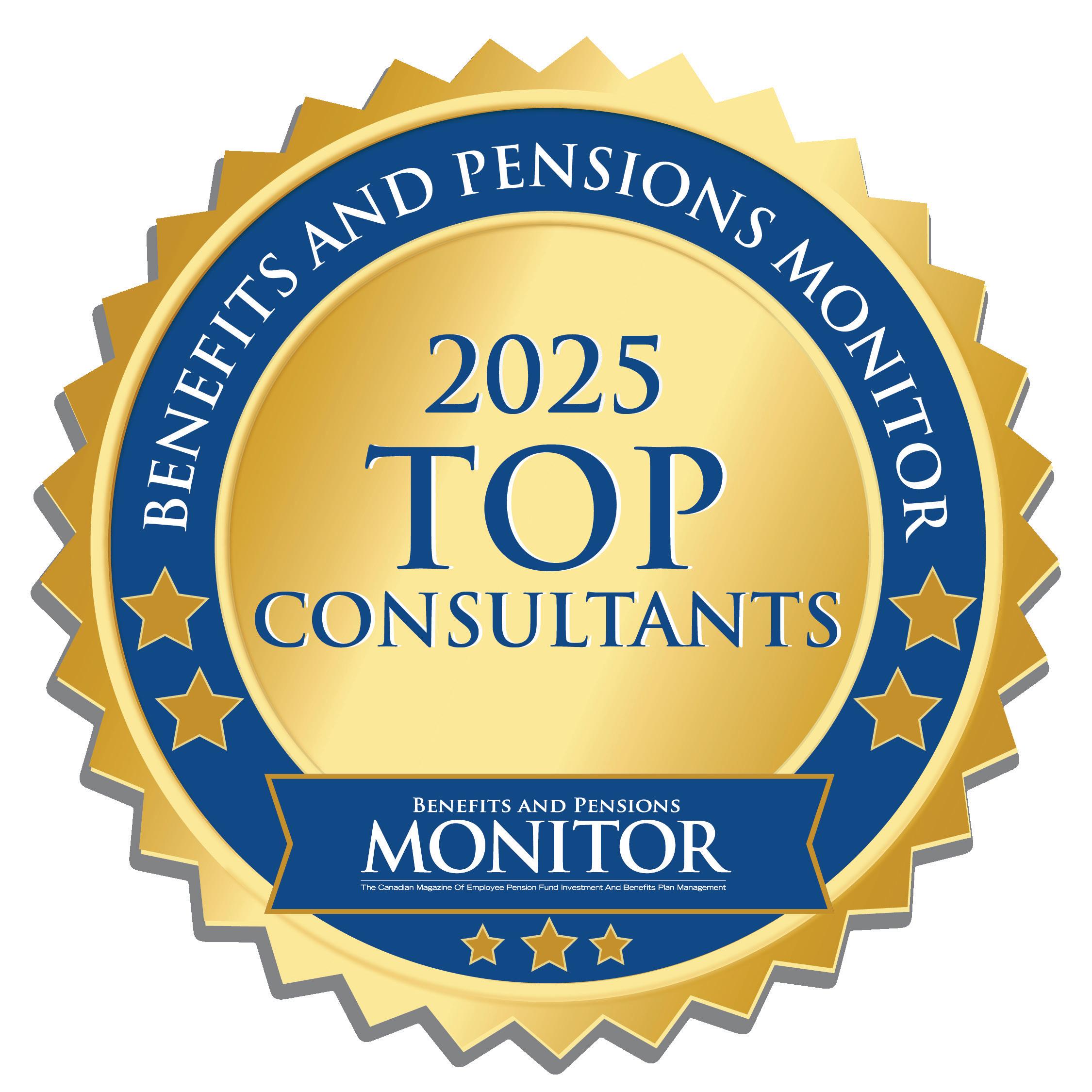

Recognizing
and

AS PEOPLE live longer, economic changes occur, and regulatory pressures evolve across Canada, so too must the strategies of those in the pensions and benefits industry.
One of the most significant recent shifts is a growing emphasis on retirement income – moving beyond mere savings accumulation to a more sophisticated focus on decumulation and income sustainability. In this dynamic environment, the role of the consultant is more critical than ever.
“We see top service providers leaning into these challenges by helping clients
reassess their funding strategies, modernize governance frameworks, and explore more flexible plan designs,” says Korinne Collins, director and CEO of the Association of Canadian Pension Management (ACPM).
“Importantly, they’re also participating in broader industry discussions that we facilitate on how to expand plan coverage, improve retirement readiness, and build a more inclusive system.”
The firms that have stood out by navigating these changes and leading the industry forward are recognized by Benefits
and Pensions Monitor as the Top Pension and Group Benefits Consultants 2025.
The shift from saving to spending
Traditionally, retirement plans were evaluated based on their ability to help Canadians build a sizable nest egg. Today, however, the focus is increasingly changing.
“It’s not just saving for retirement, but helping Canadians turn those savings into stable, lasting income,” says Collins.
This evolution reflects a deeper understanding of member needs and underscores the growing complexity facing plan sponsors. Consulting firms are stepping up by advising on income-focused solutions and other decumulation vehicles such as:
• Variable Payment Life Annuities
• Advanced Life Deferred Annuities
“It’s also about making sure those tools are accessible and understood,” says Collins.
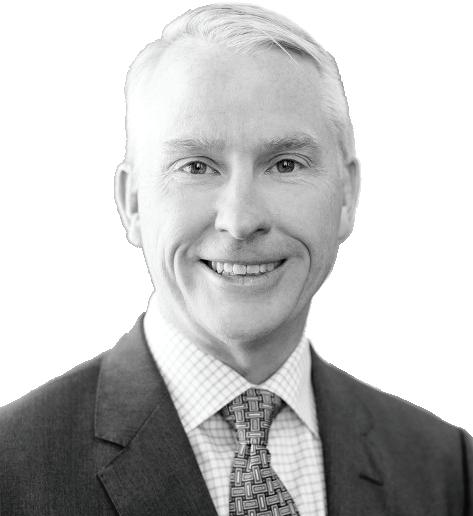
“Our constant focus is ‘better’ client outcomes, which comes down to expert advice to ensure client goals are reflected in their programs”
Todd Stephen, Selectpath Benefits & Financial Inc.




“On the design side, we’re seeing more interest in hybrid and shared risk plans that balance sustainability with member needs.”
These approaches aim to optimize efficiency, reduce administrative costs, and enhance long-term sustainability. Hybrid plans, in particular, are gaining traction for their ability to balance employer predictability with member flexibility.
The consultant as strategist and collaborator
In this era of uncertainty – marked by market volatility, an aging workforce, and evolving regulations – the need for strategic, multidisciplinary advice has never been greater. The most impactful consultants combine technical proficiency with clarity, collaboration, and foresight. Their value lies not just in detailed actuarial modeling or regulatory interpretation, but in their ability to bridge silos, bring diverse stakeholders into alignment, and translate complexity into actionable decisions.
Proactive role in policy and advocacy
Collins adds, “The most respected firms today are strategic and forward-looking. They don’t just respond to change; they help their clients prepare for it.”
Many participate in ACPM-led initiatives aimed at improving retirement readiness, expanding plan coverage, and enhancing plan inclusivity. In doing so, they influence both public policy and private practice, demonstrating that elite consultancy is as much about leadership as it is about service delivery.
Technology with judgment
As across other industries, the rise of AI and data analytics is transforming pensions and benefits administration. Leading firms are applying technology to enhance forecasting accuracy, streamline workflows, and personalize member communications. But the differentiator isn’t technology alone – it’s how it’s used. The best consultants combine innovation with fiduciary integrity, ensuring that digital tools support, rather than replace, sound professional judgment and robust governance.
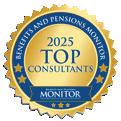

Key figures:
• Over 95 percent annual client retention rate
• Over 85 percent plans tailored to client needs
• Over 90 percent inquiries resolved in under 48 hours
The firm delivers high-impact consulting services rooted in technological innovation with a deep commitment to community. For Canadian businesses seeking to transform their group benefits and savings programs, Maximus Rose offers not only guidance but a partnership. In turn, Maximus Rose’s value proposition is built on its own strategic partnerships that deliver tangible health and financial benefits for clients and employees alike.
For example, a collaboration with Acclaim Ability Management brings industry-leading expertise in occupational and non-occupational injury and illness management. Their proprietary AI-enabled platform, Acctrak, was designed by case managers for case managers, embedding over 30 years of best
practices into an intuitive system that drives efficiency, speed, and better return-to-work outcomes.
Maximus Rose also brings cutting-edge innovation to the table through partnerships with:
• Lily Life for pharmacogenetic testing to support personalized medicine
• Medcan for executive health and proactive medical management
• Rexall for national pharmacy and wellness support
CEO Tony Fasulo says, “These aren’t just perks – they represent hard cost savings, increased access to preventative care, and an elevated experience for the organizations we serve.”
Over the past year, Maximus Rose has integrated advanced technology without losing the personal touch that defines its service. This is made tougher by being part of a highly saturated marketplace where businesses are constantly overwhelmed by ads, emails, and cold calls.
Fasulo says, “We’ve responded by constantly refining our outreach strategy: tailoring not just what we say, but when, where, and how we say it. It’s an ongoing process of adaptation, storytelling, and strategic positioning to ensure our value proposition cuts through the clutter.”
Benefits and Pensions Monitor launched the nominations for its second annual Top Pension and Group Benefits Consultants report on February 10, in line with the publication’s goal to recognize the elite consultancy firms in the benefits and pensions sector. Entrants were requested to outline their accomplishments over the last 12 months and explain the distinctive service offerings that distinguish these firms, along with the value they deliver to their clientele.
In the process of selecting the Top Pension and Group Benefits Consultants winners, BPM meticulously evaluated all nominations, scrutinizing each firm’s significant contributions to its clients and the benefits and pensions industry.


Over the past year, Sutton Benefits & Pension has experienced challenges with some suppliers and vendors with disruptions in response times, technology, and inconsistent service levels that have challenged the firm’s high standards.
They spurred Sutton Benefits & Pension to double down on client advocacy. Whether through persistent follow-ups, seeking workarounds, or escalating issues, the team has gone above and beyond to shield clients from backend inefficiencies.
“Our clients don’t know what we’re doing behind the scenes all the time,” says president Andrea Hansen. “Our team is tenacious and so passionate, and are moving mountains, so we get to deliver results for our clients and make sure they’re happy.”

“At every step, our goal is to ensure technology supports – and never replaces – the skilled professionals at the heart of what we do”
Tony Fasulo, Maximus Rose
This has resulted in a decision to invest heavily in change management, communication, and education. That’s included restructuring roles, creating standard operating procedures, building dashboards for transparency, and involving frontline users in the platform’s development to ensure it fits real-world needs.
In addition to Acctrak, the firm leverages tools like Power BI for data visualization and advanced reporting, and optical character recognition technology to digitize and extract information from physical documents, improving both speed and accuracy across case management processes.
It is also actively preparing to expand the use of AI-supported tools such as triage automation, early risk identification, and case pattern analysis. These
capabilities will further enhance the precision of reporting, streamline workflows, and allow Maximus Rose to deliver greater value.

Benefits & Pension – Saskatoon, SK

Advocates, advisors, and strategic partners
Key figures:
• 32 percent revenue growth in 2024
• 97 percent of top clients retained in 2024
• 5 like-minded professionals and independent businesses operating out of the Sutton office, bringing expertise in leadership, communication, and wellness
This is an illustration of how people are what truly differentiates Sutton Benefits & Pension. Its team is driven, collaborative, and deeply invested in the success of every client. All work in the Saskatoon office, with no one choosing to be hybrid.
“We meet every day in our daily huddle where we all share our thoughts on what’s the best thing that we did to move the company forward. We’re always connecting, collaborating, and communicating with each other,” says Hansen.
Bucking the trend of mergers and acquisitions has stood Sutton Benefits & Pension in good stead. Its freedom offers it the ability to build a deep familiarity with clients, which allows the firm to deliver tailored service and memorable experiences – from in-person seminars to peer-to-peer learning events.
Importantly, the firm is selective about client growth, ensuring that service levels and relationships remain strong without outside corporate influence. “We value the freedom to shape our own path,” Hansen explains. “If I were answering to someone else and had to hit targets, it would change everything. Maintaining our independence allows us to focus on what matters most.”



of clients’ unique total rewards program. The assessment reveals areas where resource allocation is out of balance and enables the Sutton team to develop a prioritized action plan.
Hansen says, “I want to help our clients move forward and attract the people they want and retain the people they need. I want to be part of their success.”

Toronto, ON
through

It embraces technology not to replace human interaction, but to enhance it. AI tools, such as meeting summarization and CRM customization, help streamline operations and free up time for face-to-face engagement. Hansen says, “That’s what our clients value most — a personal connection. They don’t want to deal with a faceless technology company.”
Another feature of the firm’s tech use is synthesizing claims data, utilization trends, and putting metrics into clear, actionable insights, enabling clients to make confident decisions without getting bogged down in analysis.
“Our clients are busy running and growing their business; they’re trusting me to analyse the data and simplify it for them,” adds Hansen. “I’m a professional decision-maker. I don’t kill my clients with data.”
This has borne the Sutton Employee Engagement Wheel™, a self-assessment tool to evaluate nine essential components

Key figures:
• 98.5 percent client retention rate
• 74.4 impressive Net Promoter Score
• 17.5 percent compound annual growth rate
Selectpath Benefits & Financial positions itself as a forward-thinking partner dedicated to long-term client success.
At the heart of Selectpath’s offering is its proprietary Guided Professional Solutions model – a consultative framework designed to optimize benefit and savings programs according to the unique needs of each client. Delivered by entrepreneurial advisors who understand the complexities of modern workforce planning, the model ensures every engagement is customized, informed, and focused on long-term outcomes.
This personalized strategy is reinforced by a deep bench of specialists, including account managers, client service associates, analysts, and education professionals, acting as embedded partners.
Client-centric innovation and scale
Todd Stephen, VP benefits & pension, says, “Our biggest and never-ending challenge is how to continue to stay educated and informed on product, service, and legislative developments and translate that knowledge into insights that clients can incorporate into their thinking and decision-making.
More importantly, this innovation is never
“We are strategic partners to our clients. They rely on us not only for compliance and plan design, but for guidance that simplifies complexity and supports their business goals”
Andrea Hansen, Sutton Benefits & Pension
divorced from purpose. The firm is committed to improving plan member outcomes, using analytics, benchmarking, and predictive tools to tailor programs to real-world needs. Whether it’s enhancing claims management or refining plan design, Selectpath makes the complex actionable.
This includes advanced use of big data and AI in areas such as plan design optimization, recruitment, business development, and even white paper creation. Selectpath knows the real challenge isn’t simple access to data or tools.
Some common characteristics define the industry’s winning firms and explain why they are at the forefront.
• Plan modernization to help clients navigate new options while modernizing governance frameworks and reassessing funding strategies.
• Evolution from transactional advisors to embedded strategic partners operating with multidisciplinary fluency.
• Embracing digital transformation through AI, automation, predictive analytics, and custom tools.
• Unwavering focus on member outcomes.

Sutton Benefits & Pension
Phone: 306 934 5540
Email: ahansen@suttonplanning.ca
Website: suttonplanning.ca
Maximus Rose Living Benefits Inc.
Phone: 1 855 561 4274
Email: info@maximusrose.com
Website: maximusrose.com
Selectpath Benefits & Financial Inc.
Phone: 519-675-1177
Email: info@selectpath.ca
Website: selectpath.ca
Actuarial Analytics
Aria Benefits
benefitsConnect Inc.
BFL Canada Benefits
Bodhi Research Group
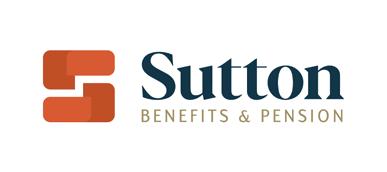



S& Mosey
Email: ahansen@suttonplanning.ca
Website: suttonplanning.ca
utton Benefits & Pension has been a trusted provider of holistic wealth planning, benefits, and pension services since 1990. Dedicated to serving successful and caring employers, Sutton optimizes group benefits and pension programs as part of a comprehensive, integrated approach to attracting and retaining talent. To maintain the highest level of service, Sutton limits the number of new clients it takes on each year, ensuring the best experience for its clients.
Known for its client-centered approach, Sutton offers responsive and personalized support to ensure a delightful client experience. It seeks to partner with companies that prioritize the well-being of their employees and families, have a strategic focus, are generous and humble, and take action.
The company was built on the values of respect and putting clients’ interests first, principles that founder Bob Sutton believed would lead to success. Today, these values are upheld by the current partners who proudly continue his legacy. Under the leadership of president Andrea Hansen, Sutton Benefits & Pension has grown significantly and now boasts a team dedicated to providing expert advice to Saskatchewan employers.




Maximus Rose is a Canadian-owned consulting firm specializing in employee group benefits and retirement solutions. It partners with organizations to design and manage innovative, costeffective programs that support employee well-being while protecting the bottom line.

With decades of leadership across insurance, health services, and human resources, the Maximus Rose team helps employers navigate the complexities of today’s evolving benefits landscape.
Its approach is strategic, data-driven, and tailored. Whether addressing rising costs, improving employee engagement, or aligning plans with organizational goals, Maximus Rose delivers solutions built for long-term impact.
The firm’s services include group benefits and retirement plan design, benchmarking, wellness strategy, cost containment, and disability management integration. Backed by in-house experts and trusted partnerships, it brings clarity to complex challenges and ensures every client receives hands-on support and actionable guidance.
Maximus Rose is committed to creating programs that work – for organizations and for the people behind them.
Selectpath Benefits & Financial is a leading Canadian provider of customizable employee benefits, pension solutions, and financial planning services.
With over 25 years of experience and offices across Ontario and Atlantic Canada, its team of accredited advisors works with organizations nationwide to align their benefits programs, pension solutions, and employee wellness strategies with their long-term goals.

Selectpath is trusted by thousands of clients to design and manage benefit plans and retirement assets that support employee wellbeing, talent retention, and financial security. It guides clients through a comprehensive needs assessment, plan design, and smooth implementation.
Attentiveness is one of the hallmarks of Selectpath’s service experience, leading to excellent client satisfaction and retention.
As a certified B Corporation, Selectpath meets global standards for transparency, social and environmental responsibility, and governance. Balancing profit and purpose in every decision, Selectpath’s people-first culture extends to its clients and employees, and their communities.
Leaders share insights on addressing obesity as a chronic disease, highlighting the need for holistic employee benefits support and proactive health strategies
OBESITY IS more than just weight – it’s a complex medical condition that has significant implications for individuals and employers alike. Recognizing it as a chronic disease driven by a multifaceted interplay of several factors is crucial to effectively managing it within the workplace.
One of the most significant impacts of obesity is its association with chronic conditions such as cardiovascular disease, musculoskeletal issues, and certain cancers.1 Obesity increases the risk for most top health-benefit cost drivers in Canada.2 However, by proactively addressing obesity, employers can contribute to increased productivity and enhance the well-being of employees.3
As Yves Robitaille, MD and specialist in internal medicine at the Center for Metabolic Medicine, explains, “We now have a wealth of science showing that obesity isn’t just about choices. Adipose tissue, the body’s energy reserve, is essential for survival, but flaws in its regulation can lead to disease. When these mechanisms fail, obesity becomes a chronic condition –not simply an issue of personal willpower.”
Dr. Robitaille adds that even life choices, often viewed as the primary driver of obesity, are partially influenced by genetic predispositions and environmental factors. “The World Health Organization defines obesity as a breach in psychological, biolog-
ical, and social well-being, meeting the criteria for a disease. We now have clear evidence that obesity results from physiological disruptions in the body. It’s time to treat it with the same seriousness as other chronic diseases.”
While the scientific community has made strides in understanding obesity as a chronic condition, its impact on workplace health and productivity under -

strategies that support employees’ overall health and well-being.
The societal view of obesity as a lifestyle condition perpetuates bias and stigma, hindering those affected from seeking help. Elia points out that while Obesity Canada has provided clear practice guidelines
“We now have clear evidence that obesity results from physiological disruptions in the body”
Dr. Yves Robitaille, Center for Metabolic Medicine
scores the need for proactive strategies that address its root causes. In conversation with Benefits and Pensions Monitor , Robitaille was joined by other experts –Amine Mohammed Bouchaib, director of patient access for obesity at Novo Nordisk; Sandra Elia, best-selling author, public speaker, and founder of the Food Addiction Recovery Program; and Joanne Jung, pharmacy practice leader at WTW – to discuss the importance of employers addressing the underlying factors and building effective
involving psychological support, pharmacotherapy, and bariatric surgery, many employees still aren’t receiving the appropriate treatments.
Employers who continue to view obesity through the lens of personal responsibility contribute to the internalized shame employees may feel. Elia says, “There are very few other disease states that carry so much judgment.”
This pervasive stigma not only affects individuals’ self-esteem but also impacts
Sponsored by
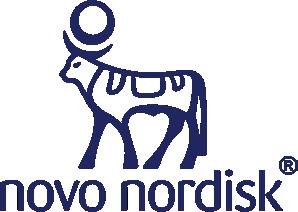

how healthcare systems and employers approach obesity, often delaying intervention until other chronic conditions arise.
As Elia remarks, “Canadian healthcare – we can be reactive, and not proactive. There is sometimes a shortsightedness and unwillingness to look at the root cause,” emphasizing that addressing obesity only after it leads to conditions like type 2 diabetes or metabolic dysfunction associated steatohepatitis is too late. “Why not help people before we cross those lines into other chronic conditions that then become a lifetime support?”
Elia stresses that this bias needs to change, stating, “When we understand that this is a vulnerable population, one of the first steps is

“When we understand that this is a vulnerable population, one of the first steps is building trust”
Sandra Elia, Food Addiction Recovery Program
building trust. Whether it’s a doctor, a pharmaceutical company, or an employer, how are you showing that you care and providing evidence-based treatment?”
Unlike other chronic conditions such as diabetes or hypertension, there’s often an undue burden placed on proving the cost-effectiveness of treating obesity.
Bouchaib specifies that the healthcare system rarely demands such proof for other diseases. “The purpose of a health plan is to provide health for the employees, not simply to save money.”
He noted that while long-term studies on the cost-effectiveness of treating obesity exist, the focus should be on short-term


“Proper nutrition, access to psychological support, and leave time for recovery – particularly for those undergoing surgeries like bariatric procedures – are critical”
Amine Mohammed Bouchaib, Novo Nordisk
outcomes and overall employee well-being. Employees living with obesity should have the same rights and access to treatment as those with other chronic diseases.
The economic burden of obesity in the workplace
Beyond the individual challenges, the societal and economic consequences of untreated obesity are equally significant, particularly in the workplace. Obesity is on
the rise globally. Since 1975, there’s been a threefold increase in the proportion of adults classified as living with obesity, with approximately 30 percent of Canadian adults now falling into this category.3
The economic burden of obesity in Canada was estimated at $7.1 billion in 2006, with $3.9 billion in direct medical costs and $3.2 billion in indirect costs such as disability and productivity loss.4
Employers need to consider the broader
implications of this rise and recognize that while the rising cost of obesity medications has raised concerns about sustainability, treating obesity early and effectively can prevent costly complications down the line.
Jung notes, “Treating these conditions early through obesity management programs can prevent the progression of type 2 diabetes, heart disease, and other comorbidities, which not only improves health outcomes but also reduces the overall economic burden on businesses.”
Elia’s personal experience highlights the true cost of ignoring obesity in the workplace. “I started at a very prestigious consulting firm, probably one of the top in the world, and they hired me at one weight. I fell prey to a commercial diet and lost 50 pounds in six months. People were so impressed, but my brain went into starvation mode, and I regained over 100 pounds in just a year and a half.” The weight gain took a toll not just on her physical health but on her mental well-being as well. “It was humiliating. I asked for a reduced workweek to take care of my health, but they said no. Eventually, I had to take sick leave.”
Her story underscores the cost of inaction. “They didn’t help me because they saw it as a lifestyle choice, but that decision ended up costing them three months of my absence and the costs of hiring a replacement who took months to catch up,” Elia points out. When she returned, she was one of the company’s most productive employees for another 10 years, proving that investing in employee health benefits the company in the long run.
Elia’s story is not uncommon. Obesity and mental health are closely intertwined, with either potentially a complication or a cause. “People suffering from obesity have a higher rate of mental health issues, whether it’s anxiety, depressive disor -
ders, or related conditions. Conversely, individuals with mental health issues are at a higher risk of developing obesity,” Robitaille explains.
This bidirectional relationship stems from various factors. “Many drugs used to treat anxiety and depression contribute to weight gain, which can escalate into obesity. Both conditions are closely linked because the brain areas controlling eating behaviours and mental health overlap significantly. These connections underline the importance of psychological support and mental health treatment as essential components of obesity care,” he emphasizes.
Of adults with depression, 20–50 percent also live with obesity,5 which can be exacerbated by societal stigma and discrimination. Jung explains that employers must address both conditions to ensure comprehensive care. This might involve linking employees to mental health providers through employee assistance programs (EAPs) or offering more robust coverage for psychological services.
Robitaille explains that Obesity Canada’s clinical guidelines outline three pillars of treatment: lifestyle modifications, psychological support, and pharmacotherapy. “A program that is built by professionals and supervised by professionals will give more efficient results,” he states. He emphasizes that coverage for healthcare professionals like dietitians and kinesiologists, who are critical in treating obesity, is often inadequate compared with the coverage for alternative professionals like naturopaths.
Robitaille points out that insurance programs sometimes reimburse only $20–$30 per appointment with a dietitian, while the actual cost is four times that
amount. This lack of coverage undermines effective obesity treatment, which should involve medical nutritional therapy and guided exercise programs created by kinesiologists. Research shows that even modest weight loss can significantly reduce the risk of type 2 diabetes, with a 13 percent weight reduction cutting that risk by 41 percent.6

Sponsored by

Historically, obesity has been lumped together with lifestyle conditions like smoking cessation in benefit plans, reinforcing the notion that it is a result of personal choices.
Dr. Robitaille points out that if society recognizes obesity as a disease, there should be no question about covering the
“Treating these conditions early through obesity management programs can prevent the progression of type 2 diabetes, heart disease, and other comorbidities”
Joanne Jung, WTW
Bouchaib emphasizes, “It’s not only about the medication. Obesity is a complex condition that requires robust support systems. Proper nutrition, access to psychological support, and leave time for recovery – particularly for those undergoing surgeries like bariatric procedures –are critical.”
He also highlights the need for employers to create inclusive workplaces for employees living with obesity. “Employers should ensure that facilities are accessible and that all measures are in place to provide patients with as normal a working experience as possible. These considerations go beyond health plans and contribute to a supportive, equitable environment.”
There is a clear need for a societal shift in how obesity is perceived and addressed –particularly by the group benefits industry.
full range of treatments, from psychological support to medication. “We’re not asking if we should cover drugs for the heart; it comes with the fact that heart disease is a disease,” he says. The same logic should apply to obesity.”
Employers have the power to change this narrative by recognizing obesity as a disease that requires the same evidencebased treatment and compassion afforded to other chronic conditions.
References
1.https://obesitycanada.ca/understanding-obesity/.
2.https://www.canada.ca/en/health-canada/services/healthy-living/yourhealth/lifestyles/obesity.html.
3.https://www150.statcan.gc.ca/n1/en/pub/82-570-x/82-570-x2023001eng.pdf?st=nKvENtN0.
4.JanssenI.ThepublichealthburdenofobesityinCanada. Can J Diabetes 2013;37(2):90–96 ;AnisAH,etal.ObesityandoverweightinCanada:Anupdated costofillnessstudy. Obes Rev. 2010;11(1):31–40.
5.TaylorVHetal.CanadianAdultObesityClinicalPracticeGuidelines:TheRoleof MentalHealthinObesityManagement. Availablefrom:https://obesitycanada.ca/guidelines/mentalhealth.Accessed Jan 2022.
6. International Journal of Obesity.https://doi.org/10.1038/s41366-02100788-4.
Consultants and experts highlight the issues that COVID exasperated and where plan sponsors have made changes

THE COVID-19 pandemic shattered longheld assumptions about workplace benefits. It forced employers to move quickly, pivot on policy, and rethink what support really means for employees. Now, five years later, benefits experts are reflecting on how the landscape has changed and where plan sponsors have had to adapt.
David Krieger, senior benefits consultant at BFL CANADA, highlights that mental health has been a defining factor. He explains that workplaces have added or increased training programs for managers and employees to recognize signs and understand what benefit program supports are available.
Similarly, Joe Blomeley believes the pandemic served as a “watershed moment” for mental health in the workplace. The surge in mental health concerns among employees prompted a tangible response from employers, who began to significantly deepen their investment in both services and insurance offerings.
One key area of change has been in the annual coverage maximums for mental health benefits.
“Before COVID, it was common to see coverage hovering around $500 per year, which, in reality, maybe gets you a couple of sessions with a therapist,” says Blomeley, executive vice president, head of GreenShield health and enterprise growth.
Contrastingly, today many employers offer much higher annual limits “anywhere between $2,500 and $10,000.” In addition
to increasing financial coverage, there has been a broadening of eligible providers.
“Pre-pandemic, it was very much just psychologists and psychiatrists. It’s now including social workers, psychotherapists, and counsellors. So, it’s not just about providing coverage when mental health support is specifically needed, but we’re also seeing a real shift towards well-being and preventative care in the workplace,” says Blomeley, pointing to a growing array of services that extend beyond traditional employee assistance programs (EAPs).
He also underscores an increasing desire among employees for a broader suite of services that cover specific life events. Specifically, a rising emphasis on women’s health, particularly in relation to fertility, perimenopause, and menopause. “We’re seeing a lot of demand, both from employers

know, the public system really is struggling at the moment, so employers are starting to step up.”
But one of the most notable significant shifts since COVID has been the rise of virtual and digital access to health and wellness services.
“The biggest change since COVID is the virtual nature of services that are being offered,” says Blomeley, recalling that before the pandemic, benefits programs often focused on in-person availability, “literally in the workplace,” he explains. But the shift to remote and hybrid work environments post-pandemic has pushed employers to adopt more flexible, digitalfirst approaches.
“There’s been a huge increase in virtual consulting. During the pandemic, you couldn’t go out to see people, and now,
“It was obvious we couldn’t access service in person during COVID, so virtual came in to support that. And I think it’s there to stay”
Daniel Drolet, Normandin Beaudry
and their employees, for solutions that can help people navigate that journey.”
Chronic disease management is also becoming a critical area of focus. With public healthcare systems under increased strain, which the pandemic also exasperated, more employees are turning to their employers for support in managing conditions such as diabetes and heart disease.
“Prior to COVID, folks would look to the public system to get support for those type of chronic diseases,” says Blomeley. “As we all
there’s been a huge increase in this,” says Krieger, adding mental health practitioners have since expanded the list of eligible counsellors and employers have increased their annual maximum for mental health under paramedicine and enhanced virtual counselling.
Daniel Drolet, senior partner, group benefits at Normandin Beaudry also agrees with Blomeley and Krieger. He emphasizes how the pandemic accelerated long-overdue improvements in how
49% of workers said their overall well-being declined after COVID-19
60% of employees now place more emphasis than they used to on benefits related to physical and mental wellbeing, like apps, private healthcare, and access to online therapy
Support with finances, personal development, and access to the office are more important for young workers in the post-COVID era
63% of employers revealed that they had seen an increase in employees’ queries about benefits since the pandemic
Almost two in three (62%) employees want to shape their benefit packages with their boss
Source:IgniteHCM,EconomistImpact
employers approach accessibility and affordability in benefits.
“It was obvious we couldn’t access service in person during COVID, so virtual came in to support that. And I think it’s there to stay,” he says. He emphasizes that virtual care has helped plan sponsors support both mental and physical health, particularly in remote areas where access to specialists was already limited.
“It’s opened our eyes to other services that can be done virtually,” he says, adding that accessibility is now “more top of mind” when organizations review plan changes.
Krieger also acknowledges plan sponsors have dedicated more resources toward


“COVID has been an opportunity for people to recognize the importance of their benefit and pension plans”
David Krieger, BFL CANADA
financial wellness, noting an increase in educational tools, like webinars and “in-plan device.”
“Prior to COVID, roughly only one-fifth of record keepers offered access to licensed, salaried financial advisors. Today, five out of five offer it,” notes Krieger.
Krieger and Drolet agree that ensuring workplace well-being has been a central theme in benefits post-COVID.
“What has shifted in benefits used to be the overarching theme,” Drolet says. “Now it’s well-being, and benefits as a pillar to support employee well-being.”
“If benefits and pension plans were important before COVID, they’re even
more important post-COVID,” emphasizes Krieger. “Perhaps COVID has been an opportunity for people to recognize the importance of their benefit and pension plans and make sure they’re using them, properly and effectively, for themselves and their family.”
Drolet underscores how COVID exposed a deeper issue. Notably, how most organizations weren’t financially prepared for the volatility in claims patterns. He recalls how dental claims, for example, plummeted during lockdowns, only to rebound sharply once restrictions eased.
7 must-have benefits
u Health insurance
u Dental insurance
u Paid time off (PTO)
u Vision insurance
u Workplace retirement plan
u Paid sick leave
u Employer match
Game-changing benefits
u Remote/hybrid working
u Flexible working hours
u Compressed workweek
Source:Fidelity’sEmployeeValueofBenefitssurvey
“When we came back to normal, it was not even normal anymore. It was three, four years of inflation and increased utilization,” he says. That volatility has pushed employers to involve finance teams more closely in forecasting and plan management.
This created a mismatch between employer expectations and reality, as Drolet explains benefit costs are still trending around 5 to 10 percent, while general inflation has dropped back to 2 or 3 percent, and salary increases are only around 2.5 to 3 percent across Canada.
HR teams are now under pressure to justify benefit cost increases that outpace inflation and wages. Drolet believes the lesson here is that HR can no longer operate in isolation, and to forecast benefit costs effectively, HR and finance need to collaborate year-round.
“It’s not just about plan design and guiding principles but understanding how
the costs work. Those organizations that learned how the benefits world works are doing better today. They’re less reactive about those cost adjustments. They see them coming,” he highlights.
From a pension perspective, Dimitri Poliak, principal at Normandin Beaudry, notably sees a similar trend.
He explains that the volatility in global financial markets since the pandemic, along with the added layer of geopolitical uncertainty, has pushed pension plan fiduciaries to re-evaluate their investment strategies
in both defined benefit (DB) and defined contribution (DC) plans.
In the DB space, there’s been a renewed focus on risk management, particularly around how strategic asset allocation supports the plan’s funded status over the long term.
“Fiduciaries have been reassessing how plan assets are positioned in light of these macro shifts and the long-term implications and impact,” says Poliak.
In the DC world, where members choose their investments but rely on fiduciaries to select the available options, the stakes

are just as high. Poliak notes that most DC assets, upwards of 80 percent, are held in target-date funds, which places added pressure on fiduciaries to ensure those funds are appropriately structured.
He also points to the new CAPSA guidelines, specifically Guidelines 3 and 10, which are raising the bar for fiduciary oversight and consistency across Canada.
“There’s been a segue away from just focusing on financial markets to a broader sophistication in investment and pension risk management,” he says.
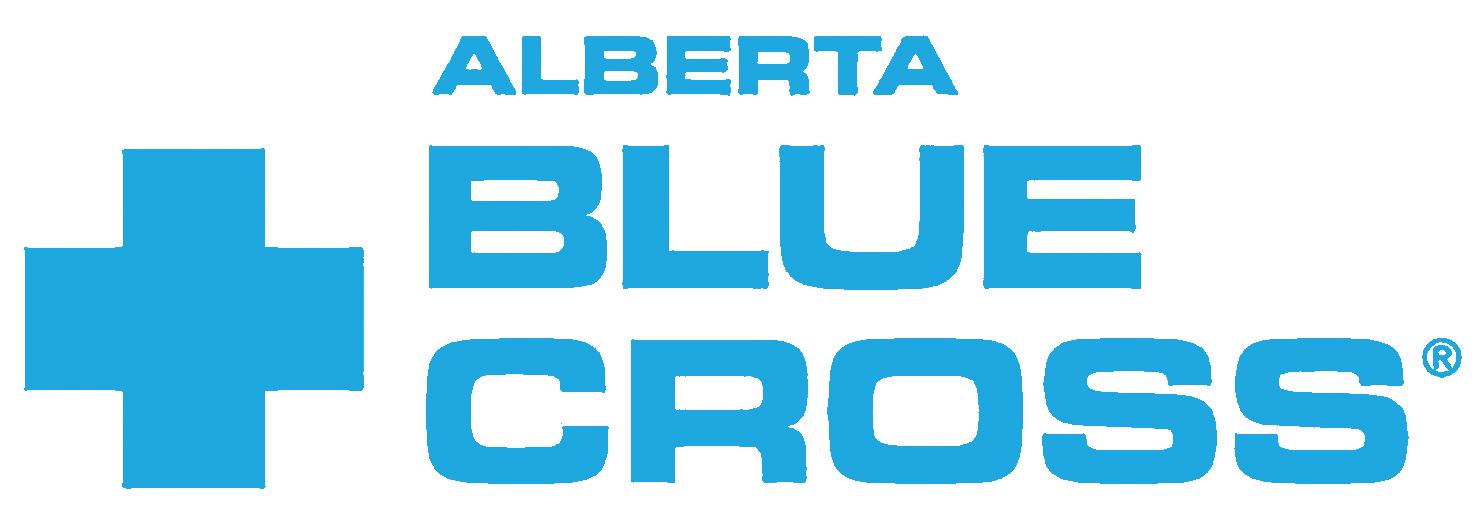
ALBERTA
Contact: Stephanie Carlson, Senior Vice President, Group
Address: 10009 108 Street NW, Edmonton, Alberta, T5J 3C5
PH: 587-735-7277
Fax: 403-266-5644
Email: stcarlso@ab.bluecross.ca Web: ab.bluecoss.ca
Net premiums (as of Jan. 31, 2025, based on OSFI): Group Life, $87M; Group Health, $193M; ASO Premiums, $1,380M
Products/Services: Prescription Drugs; Dental; Extended Health Benefits; Employee Assistance; Second Opinion; Travel Coverage; Virtual Care; Vision; Health Spending Accounts; Wellness Spending Accounts; Critical Illness Benefits; Life and Disability Insurance
Telemedicine; Pharmacogenomics; Travel Benefits; Health Spending Accounts; Transition Services; Organizational Health Consulting; Employee and Employer Assistance Programs; Insurance for Plan Members Working Abroad; Insurance for Temporary Residents; Mobile Applications

Contact: Joan Ganas, VP Group Benefits Operations
Address: 1900 Albert Street, Regina, SK, S4P 4K8
PH: 306-347-6760
Email: joan_ganas@cooperators.ca Web: cooperators.ca
Net premiums (as of Jan. 31, 2025, based on OSFI): Group Life, $41M; Group Health, $282M; ASO Premiums, $116M
Address: 95 St. Clair Ave. West, Toronto, ON, M4V 1N7
PH: 416-926-2626
Email: amy.ferguson@dfs.ca
Web: desjardinslifeinsurance.com
Net premiums (as of Jan. 31, 2025, based on OSFI): Group Life, $289M; Group Health, $3,798M; ASO Premiums, $471M
BENEVA
Contact: Sunil Hirjee, Vice President, Sales & Partner Experience
Address: 7150 Derrycrest Drive, Mississauga, ON, L5W 0E5
PH: 416-580-7004
Email: sunil.hirjee@beneva.ca Web: beneva.ca
Net premiums (as of Jan. 31, 2025, based on OSFI): Group Life, $258M; Group Health, $3,454M; ASO Premiums, $182M Products/Services: Dental; Drug; Extended Health; LTD & STD; Life Insurance; AD&D; Flexible Benefits Plan; Critical Illness Insurance; Co-ordination of Benefits; Communication Material; Drugs & Dental Cards; Rehabilitation Services; Health & Wellness Programs; Income Insurance; Early Intervention Programs; Direct Deposit; In-house Medical Expertise;
Products/Services: Life; Dependent Life; AD&D; Short Term Disability; Long Term Disability; Extended Health Care; Vision Care; Dental Care; Critical Illness; Optional Products (Life, AD&D, CI); Employee Assistance Program; Manager Assistance Program; Second Opinion Consult; Virtual Health Care; Health Care Spending Account; Personal Spending Account; Flexible Spending Account; Early Intervention Services; Rehabilitation Services; Wellness Now; CareNow; Web/Mobile Services; Drug Formulary Management; Medication Management; Gender Affirmation; Family Building; Indigenous Benefits; Online Enrolment; Digital Disability Claims Submission; CPP Advocate; Biosimilar Drug Strategy
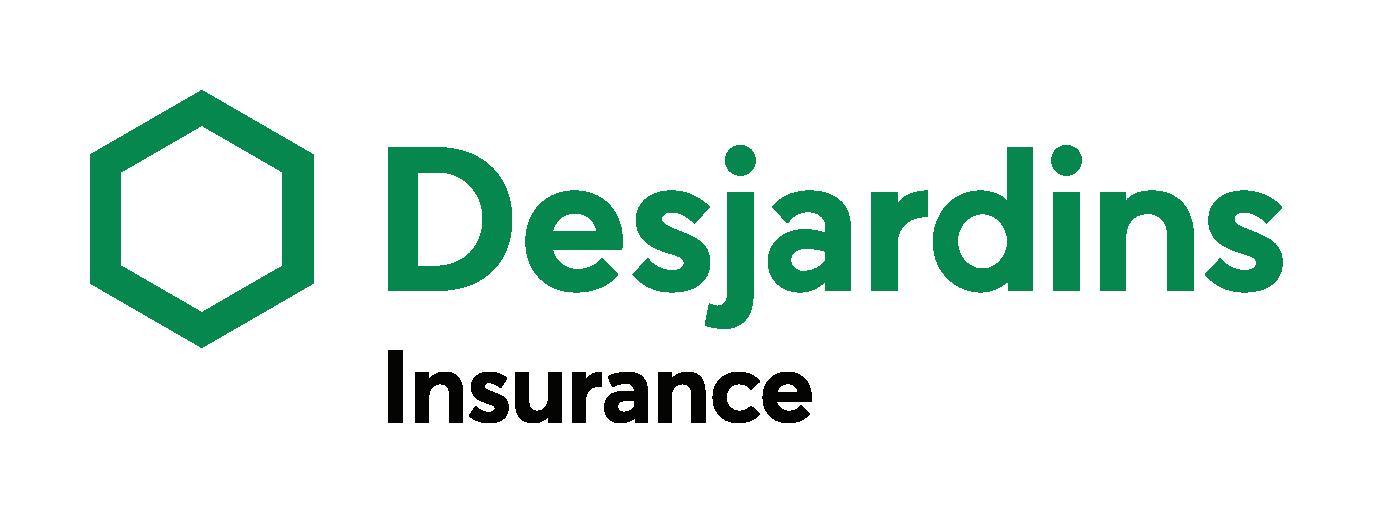
Contact: Amy Ferguson, Vice President, Business Development, Group Benefits
Products/Services: Life Insurance; AD&D; Extended Healthcare Insurance – Prescription Drugs, Vision Care, Travel Insurance & Assistance, Virtual Healthcare, Dental Care; Health Spending Account; Wellness Account; Healthy Weight Initiative; Gender Affirmation Coverage; Insurance for Expatriate Employees; Insurance for Temporary Resident; Drug Cards & Drug Management Programs (Patient Support Program for Specialty Drugs, Prior Authorization Drug List, Tiered Plan with Dynamic Therapeutic Formulary, Active Pharmacy, Preferred Provider Network, Medical Cannabis Option); Biosimilar Strategy; Family Focus (fertility, surrogacy, adoption support). Short-Term Disability; Long-Term Disability; Disability Management Advisory Services; Critical Illness Insurance; Second Medical Opinion; Health & Wellness (Health is Cool 360 platform, Employee & Employer Assistance Programs [including Digital Cognitive Behavioural Therapy], Health Assistance Service, Health PACT, Sleep Disorder Solutions); Pharmacogenetics. HR Outsourcing; Secure Sites for Plan Administrators & Plan Members; Omni mobile app; Transfer of Electronic Data; Flexible Benefits; Self-insured Benefits (ASO, BASO, Cost Plus)

Contact: Marc Avaria, Executive VicePresident, Group Insurance Division
Address: One Westmount Road North, Waterloo, ON, N2J 4C7
PH: 519-904-8011
Fax: 519-883-7400
Email: mavaria@equitable.ca
Web: equitable.ca
Net premiums (as of Jan. 31, 2025, based on OSFI): Group Life, $49M; Group Health, $409M; ASO Premiums, $179M
Products/Services: Equitable® provides a range of group benefits solutions designed to meet clients’ unique needs, including: Life, Accident and Critical Illness Insurance; Extended Health Care; Dental Care; Pharmaceutical Benefits; Pharmacogenomics Testing; Vision Care; Disability Management Solutions; Health Care Spending Accounts and Taxable Spending Accounts; EZBenefits™ for small business; myFlex™ flexible benefits plans; Personal Health and Dental Coverage (for plan members exiting their employee benefits plan); Emergency Medical Travel Assistance; Provincial Plan Replacement Coverage for Inpats and a suite of HealthConnector™ health and wellness services, including Employee and Family Assistance Programs, Virtual Healthcare, Medical Second Opinion Services, Cancer Support, and Online Mental Health Assistance

Contact: Carmen Hogan, Senior Vice President – Client Experience & Enterprise Growth Address: 8677 Anchor Drive, Windsor, ON, N9A 6W1
PH: 416-770-5997
Fax: 416-733-1955
Email: carmen.hogan@greenshield.ca Web: greenshield.ca/en-ca
Net premiums (as of Jan. 31, 2025, based on OSFI): Group Health, $910M; ASO Premiums, $2,656M
Products/Services: Greenshield is Canada’s only national non-profit health and benefits company. Through its unique integrated payer-provider (“payvider”) model, Greenfield offers insurance, administers benefits and pays claims as a “payer” while offering health services such as mental health, pharmacy, telemedicine and chronic disease management as a “provider.” Full services
list: Extended Health Services; Vision; Dental; Drug (including Specialty Care Program and Pay-Direct and Deferred Services); Emergency Travel Benefits and Assistance; Health Care Spending Account; Personal Spending Account; Individual Health and Dental; Group Conversion Program; Proprietary Adjudication System; Business Travel – Global Medical Coverage; Gender Affirming Coverage and Care; Family Building Support; Employee Assistance Programs; Digital Pharmacy Services; Virtual/In-person Mental Health Services; Telemedicine; Comprehensive Wellbeing Support; Substance Use Management; Specialized Clinical Services; Peer-to-Peer Support; Culturally Appropriate Care including Indigenous Mental Health Services; Workplace Health Education; Chronic Disease Management Program (including support for diabetes/pre-diabetes management); Personalized Nutrition Support; Care Navigation
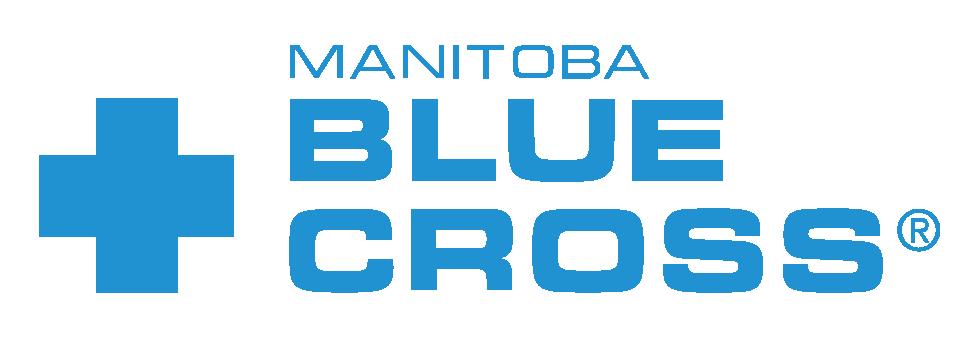
Contact: David Tompkins, Vice President, Sales Address: Box 1045 Stn Main, Winnipeg, MB, R3C 2X7
PH: 204-784-6484
Fax: 204-774-1761
Email: david.tompkins@mb.bluecross.ca Web: mb.bluecross.ca
Net premiums (as of Jan. 31, 2024, based on OSFI): Group Life, $27.62M; Group Health, $109.47M; ASO Premiums, $294.5M
Products/Services: Group Products/Services: Group Health Benefit Plans, including Prescription Drugs; Extended Health; Vision; Dental; Travel; Ambulance/Hospital; Health and Wellness Spending Accounts; Wellness; Virtual Care; Employee Assistance Program; Critical Illness; Accidental Death and Dismemberment; Life Insurance; Short and Long-Term Disability. Organizational Wellness Benefits include Organizational Assistance; Trauma Response; Crisis Event Management; Workplace Interventions; Conflict Resolution.
Individual Products/Services: Individual Health and Dental Plans (including family, retiree and conversion plans); Travel Coverage

Contact: David Adams, Senior Vice-President, Insurance Business
Address: 644 Main St., Moncton, NB, E1C 8L3
PH: 506-867-4720
Fax: 506-867-4651
Email: groupbenefits@medavie.bluecross.ca
Web: medaviebc.ca
Net premiums (as of Jan. 31, 2025, based on OSFI): Group Life, $554M; Group Health, $960M; ASO Premiums, $45M
Products/Services: Canada’s only fully integrated health, disability, and pharmacy benefit carrier, with in-house pharmacy benefit management technology. Full group insurance offering includes Life, Income Replacement, Extended Health, Dental, and Travel Products, as well as a wide range of Digital Health, Mental Health, Women’s Health, Chronic Disease Management, Health Coaching, Optional Benefit, Health Spending Accounts and more. Top-rated Blue Cross mobile app, Member Services Site, Connected Care platform, provider ePay, and feedbackdriven Total Experience Program.
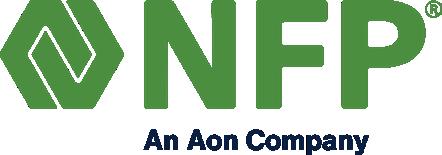
Contact: Sally Hagan, Managing Director, Group Benefits & Retirement
Address: 100 King Street West, Suite 5140, Toronto, ON, M5X 1E1
PH: 647-556-5343
Email: sally.hagan@nfp.ca
Web: nfp.ca
Net premiums (as of Jan. 31, 2025, based on OSFI): $500M combined (Life, Health, and ASOS)
and Pensions
Products/Services: Group Benefits Consulting; Group Retirement Consulting; Actuarial Services

Contact: Kelly Sanheim, Senior Vice President, Chief Financial & Risk Officer
Address: 516 2nd Avenue North, Saskatoon, SK, S7K 2C5
PH: 306-244-1192
Fax: 306-652-5751
Email: ksanheim@sk.bluecross.ca
Web: sk.bluecross.ca
Net premiums (as of Jan. 31, 2025, based on OSFI): Group Life, $31M; Group Health, $59M; ASO Premiums, $48M
Products/Services: Health; Dental; Drugs; Travel; Drug Card; EFAP & Virtual Care; Medical Second Opinion; Health Spending Account; Personal Wellness Account; Vision Care; ASO; Life Insurance; AD&D; LTD; Critical Illness; Protection Plus; Cost Plus

Contact: Sophie Ouellet, Vice-President, Business Development, Group Benefits
Address: 1155 Metcalfe St., Montreal, QC, H3B 2V9
PH: 514-866-3967
Email: sophie.oullet@sunlife.com
Web: sunlife.ca
Net premiums (as of Dec. 31, 2024, based on OSFI): Group Life, $792M; Group Health, $6,520M; ASO Premiums, $5,353M
Products/Services: Extended Health Care & Dental; Pharmaceutical Benefits; Travel Benefits; Vision; Drug Intervention Programs; Pay-direct & Deferred Drug Plans; Health Spending Accounts & Personal Spending Accounts; International Benefits; Voluntary
Benefits (Mandatory & Optional Critical Illness, Optional Life & AD&D); Transition Services (Life, Critical Illness & Health & Dental for Group Plan Members exiting their employee group benefits plan); Organizational Health Consulting; Mental Health Solutions; Virtual Care; Absence & Disability Management Services (for Disability Benefit & Salary Continuance Programs); Employee Assistance Programs; Total Benefits (Integrated Benefits & Retirement Services)

Contact: Chris Carr, Senior Vice President, Special Risk
Address: 400 – 33 Yonge Street, Toronto, ON, M5E 1G4
PH: 416-366-2223
Email: inquiries@suttonspecialrisk.com
Web: suttonspecialrisk.com
Products/Services: Group AD&D/Personal Accident; Critical Illness; Life; Disability; Temporary and Permanent Total Disability; Expatriate Benefits; Out of Country/Inpatriate Medical & Dental; Global Business Travel; Occupational AD&D; Kidnap, Ransom & Extortion; War Risk & Terrorism; Professional Sports; Contingency

Contact: S. Scott Knight, Vice President, Group Benefits Distribution
Address: 236 Carlton Street, Winnipeg, MB, R3C 1P5
PH: 905-399-1462
Fax: 1-888-985-3872
Email: scottknight@wawanesa.com
Web: wawanesalife.com
Net premiums (as of Jan. 31, 2025, based on OSFI): Group Life, $22M; Group Health, $98M;
ASO Premiums, $2M
Products/Services: Employee Life; Dependent Life; Optional Life; Accidental Death and Dismemberment; Short-term Disability; Longterm Disability; Hybrid Disability; Accident and Serious Illness Disability; Critical Illness; Extended Health; Vision; Emergency Out of Country; Dental; Health Care Spending Account; Personal Spending Account; Cost Plus; Business Assistance Program; Employee Assistance Program; Telemedicine; Expert Medical Services; Optional Critical Illness; Optional Accidental Death and Dismemberment
Contact: Matt Iannuzzi, Senior Manager, Partnerships
Address: 77 King Street West, Suite 2130, Toronto, ON, M5K 1E7
PH: 855-683-2030
Email: miannuzzi@commonwealthretirement.com
Web: commonwealthretirement.com
Products/Services: Innovative Products: Common Wealth is Canada’s fastest-growing group retirement provider. Winner of the Pensions & Investments Innovation in Technology award, the modern platform offers a superior digital experience with fast, easy set-up and administration of group plans. Integrated Group RRSP, Group TFSA, DPSP, RRIF, DCPP and highly flexible matching options. High-quality institutional investments from BlackRock®, RBC Global Asset Management, and Mackenzie Investments, and annuity options from Blumont Annuity with modern record-keeping technology. Members benefit from low fees for life, built-in personalized retirement planning that projects retirement income, including government benefits, automatic investing, and a mobile app to track retirement readiness. Superior Services: Online education, dedicated access to retirement specialists for sponsors and members, customizable enrolment materials,
and
team education. Advisors: Full-service sales and marketing programs, seamless sponsor transfers and guided onboarding. Client Profile: All company sizes.

Contact: Chris Walker, Regional Vice-President –Business Development and Investment Strategy Address: 95 St. Clair Ave. West, Toronto, ON, M4V 1N7
PH: 416-938-9359
Email: chris.walker@dsf.ca
Web: desjardinslifeinsurance.com
Net premiums (as of Jan. 31, 2025, based on OSFI): Group Pension Premiums & Deposits, $4,243M; Group Pension Assets, $31,899M Products/Services: Plan Member Education; Financial Planning; In-Plan Advice & Guidance; Plan Management Services; Transfer-in; Investment Solutions; DC Plans; Group RRSPs; DPSPs; First Home Savings Account (FHSA); Non-Registered Plans; Simplified Pension Plans; Individual Pension Plans; Defined Benefit Plans; Investment-only Plans; Single Premium Annuities; TFSA, VRSP, and RIF/LIF/Annuities; Variable Benefits; Supplemental Executive Retirement Plan; Delegated DC; Financial Wellness Centre; Retirement Simulator; Online Investment Advice; Online and Virtual Education Session; Onsite Education; Contribution Limit Monitoring: Online Contribution Rate Management; Customer Service Centre; Transactional & Mobile Secured Plan Member
Website: Personalized Member Communication; Secured Plan Sponsor Website; Online Sponsor Reports; Personalized Sponsor Dashboards; Electronic Data Exchange; Eligibility Management

Contact: Ted Singeris, Vice-President, Client Relationships and Business Development and
Head of Western Canada
Address: 140–4th Ave SW, Suite 1200, Calgary, AB, T2P 3N3
PH: 416-587-0878
Email: ted.singeris@sunlife.com
Web: sunlife.ca/workplace/en/groupretirement-services
Net premiums (as of Jan. 31, 2025, based on OSFI): Group Pension Premiums & Deposits, $15,052M; Group Pension Assets: $144B Products/Services: Group Products: DCPP, RRSP, TFSA, DPSP, NREG, EPSP, VRSP, SPP; SunAdvantage mysavings program; DB-INVO; Group LIF/RIFF; DB offerings and derisking solutions. Services: CAP Record-keeping; Customizable Communication Materials; Online and mobile enrolment; Educational and transactional website for members, plan sponsors and advisors; Mobile app for plan members; Self-serve or assisted online goalbased planning tool for members (Sun Life One Plan); Personalized plan member advice offered at no additional cost; Small Business Centre for sponsors and advisors; Member servicing centre; Customizable education and advice materials; Free Financial Wellness webinar series for members; Sponsor DC delegated program; Transition and Retirement Income Planning and products for members; Onboarding and welcome program for plan members; Access to health resources for members.
Optional savings products offered to in-plan members to complement workplace program, sponsored by Sun Life Financial Trust. Rollover program (Choices) offering RRSP, TFSA, RESP, RRIF, FHSA, GICs, mutual funds, seg funds and annuities. Personalized advice offered to Choices members at no additional cost

Contact: Jason Vary, President Address: 19 Amy Croft Drive, Suite 203, Lakeshore, ON, N9K 1C7
PH: 519-979-4600
Fax: 519-979-4699
Email: jason@actuarialsolutionsinc.com
Web: actuarialsolutionsinc.com
Other offices: 466 Speers Road, 3rd Floor, Oakville, ON, L6K 3W9 Staff: 12
Services: Group Benefit: Actuarial Services; DB Pension Plans. Other: OPEB Plans; Expert Evidence. Record-keeping and Third-Party Administration: DB Pension Plan Administration

ACTUWIT
Contact: Steve McShane, VP Business Development
Address: 21 Kirkpatrick St., Brampton, ON, L6Z 4K3
PH: 416-662-9081
Fax: 416-662-9081
Email: info@actuwit.com
Web: actuwit.com
Other offices: Brampton, ON Staff: 5
Services: Group Benefit: Group Benefit Plans; Actuarial Services. Other: Employee Weather Hazard Pay. Record-keeping and Third-Party Administration: Administrative Support
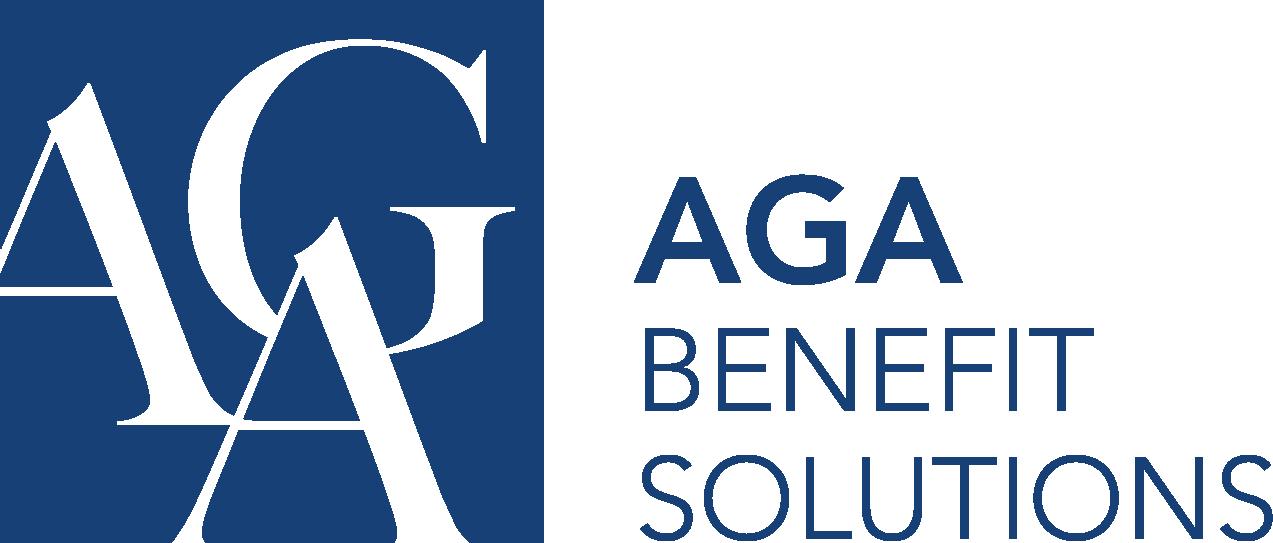
Contact: Alexandre Timothy, Vice President, Business Development
Address: 3500 De Maisonneuve Blvd West, Suite 2200, Westmount, QC, H3Z 3C1
PH: 514-471-0568
Fax: 514-935-1147
Email: alexandre.timothy@aga.ca
Web: aga.ca
Other offices: Quebec City, QC; Markham, ON, Kitchener, ON; Calgary, AB; Vancouver, BC
and Pensions
Staff: More than 300 employees
Services: Group Benefit: Group Benefit Plans; Administration Outsourcing; DC Pension Plans. Other: Trust Plans – Capital accumulation plan consulting. Investment: Investment Consulting; Asset Allocation; Manager Search; Portfolio Modelling; Policy Development; Performance Measurement; Education & Communication. Healthcare: Disability Management; Drug Cost Management; Claims Management; Employee Assistance Program; Return to Work. Record-keeping and Third-Party Administration: Employee Assistance; Healthcare Spending Account Administration; Claims Payment; Call Centre; Administrative Support; Premium Billing & Collection. Software and Technology: Benefits Administration; DC Pension; Portfolio Style Analysis; Fund Reporting; Investment Manager Selection

CANADIAN OWNED & OPERATED, DELIVERING OUTSTANDING SERVICE FOR OVER 30 YEARS
BAYNES & WHITE INC.
Contact: Pam Martin, Vice President/Senior Consultant, Group Benefits; June Smyth, Senior Actuary, Practice Leader, Pension/ Retirement
Address: 20 Eglinton Avenue West, Suite 1006, Toronto, ON, M4R 1K8
PH: 416-863-9159
Fax: 416-863-9158
Email: info@bayneswhite.com
Web: bayneswhite.com Staff: 10
Services: Group Benefit: Group Benefit Plans; Actuarial Services; DB Pension Plans; Administration Outsourcing; DC Pension Plans. Investment: Investment Consulting; Risk Management; Manager Search; Policy Development; Performance Measurement; Education & Communication; Transition Management. Healthcare: Disability Management; Drug Cost Management; Claims Management; Employee Assistance Program; Return to Work. Record-keeping and Third-Party Administration: Eligibility Verification; DB Pension Plan Administration;
Healthcare Spending Account
Administration; Administrative Support; Premium Billing & Collection. Software and Technology: DB Pension

Contact: David Vanasse, President
Address: 1836 Rue Sherbrooke O, Montreal, QC, H3H 1E4
PH: 514-449-0025
Fax: 514-843-3842
Email: dvanasse@bflcanada.ca
Web: bflcanada.ca/employee-benefits-andconsulting-services
Other offices: Vancouver, BC; Calgary, AB; Winnipeg, MB; Toronto, ON; London, ON; Montréal, QC; Quebec, QC
Staff: 95
Services: Group Benefit: Group Benefit Plans; Actuarial Services; Administration Outsourcing; DC Pension Plans. Other: Disability/Absence Management Consulting. Investment: Investment Consulting; Manager Search; Education & Communication. Healthcare: Disability Management; Return to Work. Record-keeping and Third-Party Administration: Administrative Support

LTD
Contact: Diana O’Reilly, Executive Vice President
Address: 2020 Winston Park Drive, Suite 102, Oakville, ON, L6H 6X7
PH: 905-896-2022
Fax: 905-896-2108
Email: benefits@compben.com
Web: compben.com
Other offices: 1
Benefits and Pensions
Services: Group Benefit: Group Benefit Plans; DB Pension Plans; Administration Outsourcing; DC Pension Plans. Healthcare: Disability Management; Drug Cost Management; Claims Management; Employee Assistance Prog-ram; Return to Work. RecordKeeping and Third-Party Administration: Employee Assistance; Eligibility Verification; Call Centre; Claims Advocacy; Administrative Support; Premium Billing & Collection. Software and Technology Consulting: Benefits Administration

Contact: Ryan Kuruliak, SVP & Practice Leader, Investment Consulting
Address: 130 King Street West, Suite 1100, Toronto, ON, M5X 1E4
PH: 416-619-8468
Fax: 416-597-2313
Email: ryan.kuruliak@hubinternational.com Web: hubinternational.com/en-CA/products/ investment-consulting
Other offices: Toronto, ON
Staff: 25
Services: Group Benefit: Group Benefit Plans; DB Pension Plans; DC Pension Plans. Other: Pension Governance; Investment Consulting; Administration/Actuarial Evaluation & Search; Executive Retirement Plans; Performance Reporting. Investment: Investment Consulting; Asset Allocation; Risk Management; Manager Search; Portfolio Modelling; Policy Development; Performance Measurement; Attribution Analysis; Education & Communication; Transition Management. Other: Pension Governance; Foundation Governance; OCIO Search; Retirement Planning Workshops/Seminars; Administration Review & Search; Executive Retirement Plans; Investment Compliance; Performance Reporting. Recordkeeping and Third-Party Administration: Recordkeeping and Third-Party Administration search. Software and Technology: Investment Management; Fund Valuation; DC Pension; Portfolio Style Analysis;
www.benefitsandpensionsmonitor.com
Fund Reporting; Investment Manager Selection; DB Pension. Other: Performance Reporting

Contact: Jonathon Avery, EVP, Head of Growth and Commercial Operations
Address: 11 Allstate Parkway, Markham, ON, L3R 9T8
PH: (800) 409-7062
Email: sales@kiihealth.ca Web: kiihealth.com
Other offices: Toronto, ON; Montreal, QC; Vancouver; BC Staff: 400+
Services: Employee and Family Assistance Program (EFAP); Medical Care; Mental Health Support Services – Mental Health Coach; CBT; iCBT; Occupational Health; Disability Management; Return to Work; Workers’ Compensation Management; Medical Specialist Connect, Independent Medical Examinations

Contact: Mark A. Lesniewski, President & CEO
Address: 2700, 255 5th Ave. SW, Calgary, AB, T2P 3G6
PH: 888-228-9024
Fax: 833-345-0404
Email: mark@lmcgroup.ca Web: lmcgroup.ca
Other offices: Toronto, ON: Calgary, AB; Winnipeg, MB Staff: 16
Services: Group Benefit: Group Benefit Plans; Actuarial Services; DB Pension Plans; DC Pension Plans. Other: Retirement Compensation Arrangements (RCAs). Record-keeping and Third-Party Administration: DB Pension Plan Administration; DC Pension Plan Administration
and Pensions

MCATEER EMPLOYEE
SERVICES
Contact: Susan Bird, President
Address: 45 McIntosh Drive, Markham, ON, L3R 8C7
PH: 905-946-8655
Fax: 905-946-2535
Email: sbird@mcateer.ca
Web: mcateer.ca
Other offices: Markham, ON; Edmonton, AB Staff: 75
Services: Group Benefit: Group Benefit Plans; Actuarial Services; DB Pension Plans; Administration Outsourcing; DC Pension Plans. Investment: Investment Consulting; Asset Allocation; Compliance Investment; Risk Management; Manager Search; Portfolio Modelling; Policy Development; Performance Measurement; Attribution Analysis; Education & Communication. Healthcare: Disability Management; Drug Cost Management; Claims Management; Return to Work. Record-keeping and ThirdParty Administration: Claims Adjudication; Employee Assistance; Eligibility Verification; DB Pension Plan Administration; Healthcare Spending Account Administration; Claims Payment; Claims Advocacy; Group RRSP Administration; Administrative Support; Premium Billing & Collection; DC Pension Plan Administration. Software and Technology: Benefits Administration; DC Pension; Health Claims Adjudication; DB Pension

NORMANDIN BEAUDRY
Contact: Éric Montminy, President
Address: 630 René-Lévesque Blvd. W., 30th Floor, Montréal, QC, H3B 1S6
PH: 514-285-1122
Fax: 514-285-1199
Email: emontminy@normandin-beaudry.ca Web: normandin-beaudry.ca
Other offices: Montréal, QC; Québec City, QC; Toronto, ON
Staff: More than 350 employees across Canada
Services: Group Benefit: Group Benefit Plans; Actuarial Services; DB Pension Plans; Administration Outsourcing; DC Pension Plans. Other: Compensation; Health Benefits; Sustainability and People Analytics. Investment: Investment Consulting; Asset Allocation; Compliance Investment; Risk Management; Manager Search; Portfolio Modelling; Performance Measurement; Attribution Analysis; Education & Communication; Transition Management. Other: Sustainability and People Analytics. Healthcare: Disability Management; Drug Cost Management; Claims Management. Other: Sustainability and People Analytics. Recordkeeping and Third-Party Administration: Claims Adjudication; Employee Assistance; Eligibility Verification; DB Pension Plan Administration; Healthcare Spending Account Administration; Claims Payment; Administrative Support. Software and Technology: Benefits Administration; Investment Management; DC Pension; Portfolio Style Analysis; Fund Reporting; Client Server Technology; Investment Manager Selection; DB Pension. Other: Actuarial Valuation; Compensation Survey; Benchmark Analysis; Pension Administration; Sustainability and People Analytics
PBI ACTUARIAL CONSULTANTS LTD
Contact: Riley St. Jacques, Partner, Senior Consultant
Address: 505 Burrard Street, Suite 1070, Vancouver, BC, V7X 1M5
PH: 604-687-8056
Fax: 604-687-8074
Email: info@pbiactuarial.ca
Web: pbiactuarial.ca
Other offices: Vancouver, BC; Burlington, ON; Montreal, QC
Staff: 100+
Services: Group Benefit: Group Benefit Plans; Actuarial Services; DB Pension Plans; Administration Outsourcing; DC Pension Plans. Other: Health & Welfare Plans; Member Communication. Investment: Investment Consulting; Asset Allocation; Compliance Investment; Risk Management; Manager Search; Portfolio Modelling; Policy Development; Performance Measurement; Attribution Analysis; Education & Communication. Other: Asset/Liability Modelling; Portable Alpha Overlay Strategies; Alternative Assets Investment (Real Estate, Hedge Funds, Infrastructure). Healthcare: Funding and Claim Risk Analysis. Recordkeeping and Third-Party Administration: Employee Assistance; DB Pension Plan Administration; Administrative Support; DC Pension Plan Administration. Other: Recordkeeping Services; Benefit Calculations; One-on-One Member Meetings; Marriage Breakdown Calculations; Research and Advice regarding Pension Legislation; Government Filings; Educational Seminars; Annual Member Statements; Reconciliation of Expenses, Contributions, Hours Reported and Benefit Payments; Organization and Attendance at Trustee Meetings; Preparation of Meeting Minutes; Annual Member Meetings; Member Communication. Software and Technology: DC Pension; DB Pension. Other: Web-based Pension Administration System; Member Portal; Member Education Websites; Member Education Videos

PENAD PENSION SERVICES
Contact: Matthew Price, CEO
Address: 194 Weber Street E, Kitchener, ON, N2H 1E4
PH: 519-743-9000
Fax: 519-743-8346
Email: information@penad.ca
Web: penad.ca
Other offices: Kitchener, ON
Staff: 30
Services: Group Benefit: DB Pension Plans; Administration Outsourcing; DC Pension Plans. Other: Software – Pension and Benefits. Investment: Manager Search. Healthcare: Disability Management Software. Recordkeeping and Third-Party Administration: DB Pension Plan Administration; DC Pension Plan Administration. Other: Full Pension and Benefits Administration Software. Software and Technology: Benefits Administration; DC Pension; Health Claims Adjudication; Client Server Technology; DB Pension. Other: Case Management; SAAS Services
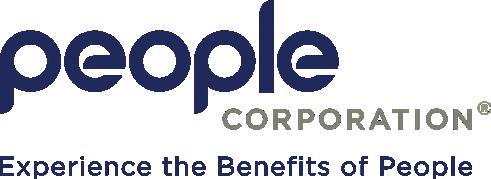
Contact: Marcelo Regen, President, Group Solutions
Address: 1403 Kenaston Blvd, Winnipeg, MB, R3P 2T5
PH: 416-277-4596
Email: marcelo.regen@peoplecorporation. com
Web: peoplecorporation.com
Other offices: Offices Canada-wide Staff: 2,700+
Services: Group Benefit: Group Benefit Plans; Actuarial Services; DB Pension Plans; Administration Outsourcing; DC Pension Plans. I nvestment: Investment Consulting; Asset Allocation; Compliance Investment; Risk Management; Manager Search; Portfolio Modelling; Policy Development; Performance Measurement; Attribution Analysis; Education and Communication. Healthcare: Disability Management; Drug Cost Management; Claims Management; Employee Assistance Program; Return to Work. Record-keeping and ThirdParty Administration: Claims Adjudication; Employee Assistance; Eligibility Verification; DB Pension Plan Administration; Healthcare Spending Account Administration; Claims Payment; Call Centre; Claims Advocacy; Group RRSP Administration; Administrative Support; Premium Billing and Collection; DC Pension Plan Administration

SECLON INC.
Contact: Matthew Price, CEO
Address: 194 Weber Street E, Kitchener, ON, N2H 1E4
PH: 519-743-9000
Fax: 519-743-8346
Email: info@seclon.com
Web: seclonlogic.com
Other offices: Kitchener, ON
Staff: 30
Services: Group Benefit: DB Pension Plans; Administration Outsourcing; DC Pension Plans. Other: Software. Investment: Manager Search.
Record-keeping and Third-Party Administration: DB Pension Plan Administration; DC Pension Plan Administration. Software and Technology: Benefits Administration; DC Pension; DB Pension
MANAGERS OF U.S. ASSETS
Despite US exceptionalism lull, experts highlight why ‘abandoning the US is probably not the way to go’
THE DEBATE over the longevity of US equity dominance has gained renewed urgency, thanks to US President Donald Trump’s trade war. With geopolitical friction, economic policy uncertainty, and technology rivalries creating fresh fault lines, many institutional investors are wondering whether it’s time to reallocate, or even pull out, from US assets.
While Michael Sager isn’t convinced the exodus has begun, he notes the mood has clearly shifted.
“We started the year, I think, like everybody did, fairly bullish about the US and therefore fairly bullish about US assets and the whole story of US exceptionalism,” says Sager, managing director and chief investment officer at CIBC Asset Management.
He explains that outlook was rooted in expected leadership in economic growth and innovation, particularly within the tech sector. Investors believed that this combination would propel both equities and the dollar higher. Adding to that confidence was the belief that the Trump administration’s economic agenda, focused on deregulation and fiscal expansion, would support continued growth. The less market-friendly components, such as tariffs and immigration crackdowns, were expected to play only a minor role.

“There was a sense that tariffs would not be too important and wouldn’t, in the long term, diminish the positives,” he says. But what followed defied expectations.
“We all got a nasty shock because trade and immigration have been prioritized, and we’re only now just getting round to the good stuff in terms of growth,” adds Sager.
Meanwhile, Ian Riach, senior vice president and portfolio manager at Franklin Templeton Investment Solutions, describes the performance of US assets in 2025 as “pretty volatile,” citing growing uncertainty around trade policy as a key trigger. While it was widely understood that President Trump would target trade relationships, Riach notes that the rapid escalation and early focus on North American partners caught many off guard.
“It was no secret that he was going to at least threaten some form of renegotiation of trade with his key partners,” he says. “At the start, we thought that he was just going to focus on China generally as the enemy, and maybe Taiwan and Korea on the tech side. We didn’t really think his fight was with Canada. But right out of the gate, he focused on us and Mexico and that’s changed a little bit now, but it’s created a lot of uncertainty, a lot of volatility.”
What surprised Riach most was how sharply that policy uncertainty translated into a shift in sentiment, both domestically and globally, as that unease was visible in equity markets, where the S&P 500 dropped roughly 20 percent from February highs to its April low, compared to more modest declines of 11–12 percent in Canada and Europe.
“The largest drop, of course, came after his so called ‘Liberation Day,’ when he announced retaliatory tariffs, so the equity markets are in pretty significant decline. We’ve seen this reflected in the US dollar as well because it’s down against all major currencies,” he adds.
Source: Yahoo Finance
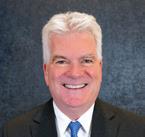
“I don’t want to say it’s completely soured, but since the announcement or the threat of all these tariffs, sentiment has really shifted to the downside”
Ian Riach, Franklin Templeton Investment Solutions
Still, Riach isn’t calling for a wholesale rejection of US equities. While the lustre of US exceptionalism seems to have dulled a little bit, he believes it hasn’t fully disappeared.
“I don’t want to say it’s completely soured, but since the announcement or the threat of all these tariffs, sentiment has really shifted to the downside,” he says.
The volatility that’s followed hasn’t necessarily prompted a full retreat from US equities, but it has prompted a reckoning among investors, causing global asset allocation in portfolios. According to Riach, many investors have leaned heavily into US assets over the past few years, riding a wave of strong returns rooted in the narrative of US exceptionalism. But as that
narrative has come under pressure due to trade policy and valuation concerns, portfolios are being recalibrated.
The key driver, he says, is relative valuation.
“Even with this bit of a valuation reset that the US has had, the PEs are still higher than long-term averages,” he notes. Contrastingly, regions like Canada and Europe, Australasia, and the Far East (EAFE) areas are trading at or below their long-term valuation metrics, making them more attractive on a risk-adjusted basis.
He also acknowledged that while there’s been strategic interest in emerging markets over the past decade, current investor behavior suggests a pause in that momentum, at least for now.
“I don’t think anybody’s really moving to emerging markets on a wholesale basis right now,” he says, pointing to traderelated uncertainty as the primary headwind. Additionally, given many emerging markets’ reliance on China, which is a central player in the US trade war, investors are treading lightly before making any rash decisions.
“We need to see a little bit more transparency on how some of those emerging markets are going to be affected with the trade policy between China and the US,” he explains.
Sager also pushes back on the notion that institutional investors and sovereign funds are abandoning US assets en masse, arguing that while the investment climate in the US has become less welcoming, there’s no clear evidence of widespread divestment.
He also dismisses the long-circulated theory that countries like China are dumping US Treasuries as part of a global retreat from the dollar.
“There’s been a lot of talk that the US dollar was losing its dominant status as the reserve currency … that’s just not true,” he says, emphasizing that while China has sold Treasuries, it has simply reallocated
Data as of April 30, 2025 Source:

“Equities are the cornerstone of accumulation. Unless your goals and objectives change, then there’s no reason your strategic allocation should change”
Michael Sager, CIBC Asset Management
those funds into other US assets, such as agency bonds.
Riach suggests that the worst of the market reaction to US tariff threats may already be behind us, noting recent signs of recovery in equities. This rebound, he explains, could indicate that the market has already priced in the damage from earlier tariff announcements. With that in mind, he cautions against exiting US equities at this stage, arguing that the opportunity for tactical withdrawal may have passed.
“Abandoning the US right now is probably not the way to go,” he says.
Sager stresses that investors should avoid overreacting to headlines or short-term
downturns, despite how tempting that may be in volatile markets.
“There’ll be good days and there’ll be bad days – the key thing is to stay invested,” says Sager, adding that longterm investing as a discipline is rooted in strategy, not emotion. Whether managing funds for growth-focused foundations or liability-driven pension plans, he emphasizes that strategic asset allocations should be reviewed regularly but not rewritten in reaction to market jitters.
“Equities are the cornerstone of accumulation,” he says. “Unless your goals and objectives change, then there’s no reason your strategic allocation should change.”

Contact: Nancy Turner, Vice President, Communications & Marketing
Address: 2000–20 Eglinton Avenue West, Toronto, ON, M4R 1K8
PH: 416-485-1010
Fax: 416-485-8516
Email: rfp@beutelgoodman.com
Web: beutelgoodman.com
Managed US assets since: 1985
US asset clients: 1
US equities: Large Cap Value, $2,250M
Total US assets: $2,250M
Other assets managed: Beutel Goodman Balanced Fund, Beutel Goodman Canadian Equity Fund, Beutel Goodman Fundamental Canadian Equity Fund, Beutel Goodman Canadian Dividend Fund, Beutel Goodman Small Cap Fund, Beutel Goodman North American Focused Equity Fund, Beutel Goodman Total World Equity Fund, Beutel Goodman American Equity Fund, Beutel Goodman International Equity Fund, Beutel Goodman Global Equity Fund, Beutel Goodman Global Dividend Fund, Beutel Goodman World Focus Equity Fund, Beutel Goodman Income Fund, Beutel Goodman Core Plus Bond Fund, Beutel Goodman Short Term Bond Fund, Beutel Goodman Long Term Bond Fund, Beutel Goodman Money Market Fund, Beutel Goodman Sustainable Canadian Equity Strategy

BURGUNDY ASSET MANAGEMENT LTD.
Contact: Mike Sandrasagra
Title: Vice President, Global Head of Consultant Relations
Address: 181 Bay St., Suite 4510, Toronto, ON, M5J 2T3
PH: 416-869-3222
Fax: 416-869-3222
Email: msandrasagra@burgundyasset.com
Web: burgundyasset.com
Managed US assets since: 1996
US asset clients: 38
US equities: Large Cap Value, $189M; Small Cap Value: $1,591M
Total US assets: $1,779.4M
Other assets managed: Asian Equities (All Cap and Large Cap), Japanese Equities (All Cap and Large Cap), Canadian Equities (Small Cap, All Cap, Large Cap), EAFE Equities, Chinese Equities, Emerging Markets Equities, European Equities (All Cap and Large Cap), Global Equities (ex-Canada and including), US Equities (Small/Mid Cap, Mid Cap), Fixed Income (Universe, High Yield, Money Market)

CAPITAL GROUP CANADA
Contact: Mike Tuira, Vice President, Institutional
Address: Brookfield Place, 181 Bay St., Ste. 3100, Toronto, ON, M5J 2T3
PH: 416-815-2079
Fax: 213-486-9223
Email: mike.tuira@capgroup.com
Web: capitalgroup.com/ca
Managed US assets since: 1931
US asset clients: 2
US equities: Core, $22M
Total US assets: $22M
Other assets managed: Global Equity, Canadian Equity, International Equity, Emerging Markets, Multi-Asset, Multi-Sector Fixed Income, Global Fixed Income, Emerging Markets Debt, other Fixed Income
US asset clients: 9
US equities: Large Cap Value: $478M
Total US assets: $478M
Passive products: S&P 500, Russell 3000 Value
Other assets managed: Money Market, Canadian Fixed Income, Liability Driven Investments (LDI), Private Debt, Canadian Equity, EAFE Equity, Currency Overlay, Asset Mix Overlay, Global Tactical Asset Allocation, Balanced, Multi-Asset Absolute Return Strategy, Asian Equities, Commodities, Global Equity Growth

Contact: Sarah Aves, Co-Head of Canadian Institutional Clients
Address: 1981 McGill College Avenue, Suite 1500, Montreal, QC, H3A 0H5
PH: 514-954-6468
Fax: 514-954-9692
Email: saves@fieracapital.com
Web: fieracapital.com
Managed US assets since: 2009
US asset clients: 13
US equities: Core, $1M; Large Cap Growth, $869M; Mid Cap Growth, $4M
US bonds: Real Estate, $0.86M; Cash, $14.24M
Total US assets: $889.56M
Other assets managed: Canadian Large Cap and Small Cap Equity, US Large Cap, SMID Cap, Mid Cap and Small Cap Equity, Large Cap Global and International Equity, Emerging and Frontier Markets, Canadian Active Universe, Canadian Credit Oriented, Money Market, Liability-Driven Investment, US Fixed Income, Liquid Alternatives, Private Debt, Private Equity, Real Estate, Agriculture, Infrastructure, Timberland
Contact: Carlo DiLalla, Managing Director & Head, Institutional Asset Management Address: 161 Bay St., Ste. 2230, Toronto, ON, M5J 2S1
PH: 416-980-2768
Email: carlo.dilalla@cibc.com
Web: cibcam-institutional.com
Managed US assets since: 1988
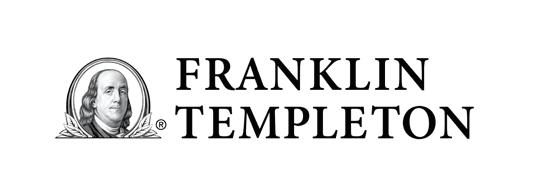
Contact: Dennis Tew, Head of Sales, Canada
Address: 200 King St. W, Ste. 1400, Toronto, ON, M5H 3T4
PH: 416-957-6023
Email: dennis.tew@franklintempleton.ca
Web: franklintempleton.ca
Managed US assets since: 1947
US asset clients: 5
US equities: Large Cap Value, $798M; All Cap Value, $12M; Core, $13M; Small Cap Growth, $48M
US bonds: Active, $61M
Total US assets: $932M
Other assets managed: Balanced Mandates, Canadian Equity, Canadian Fixed Income, Emerging Market Equity, Emerging Market Debt, Global Fixed Income, Global Equity, Global Real Estate, Hedge Funds, International Equity, Retirement Target Date/Risk Portfolios, ETFs, Infrastructure, Private Debt, Private Equity, Custom/Direct Indexing, Local Asset Management

Contact: Robin Lacey, Head of Institutional Asset Management
Address: 199 Bay Street, Suite 2700, Toronto, ON, M5L 1E8
PH: 416-947-4082
Email: rlacey@guardiancapital.com
Web: guardiancapital.com
Managed US assets since: 1984 US asset clients: 1
US equities: All Cap Growth, $1.44M
Total US assets: $1.44M
Other assets managed: EAFE, Emerging Markets, Global, Canadian

Contact: Neeraj Jain, Institutional Portfolio Manager
Address: 79 Wellington Street West, TD South Tower, Suite 3410, Box 276, Toronto, ON, M5K 1J5
PH: 416-865-3929
Fax: 888-999-6657
and
Email: njain@mawer.com
Web: mawer.com
Managed US assets since: 1992
US asset clients: 29
US equities: Core, $1,228.5M
Total US assets: $1,228.5M
Other assets managed: Global Equity, International Equity, US Equity, Global Small Cap Equity, US Mid Cap Equity, Emerging Markets Equity, EAFE Large Cap Equity, Canadian Mid-Large Cap Equity, Canadian Small Cap Equity, Private Equity (for Canadian investors), Canadian Bonds, Global Credit, Canadian Money Market

Contact: Lauren Bloom, Head of Canada
Address: 77 King Street West, Suite 4240, Toronto, ON, M5K 1G8
PH: 647-355-6887
Email: lauren.bloom@troweprice.com
Web: troweprice.com/canada
Managed US assets since: 1937
US pension asset clients: 6
US equities: Large Cap Value, $640M; Large Cap Growth, $496M; US Small Cap Core, $294M; US SRS (Structured Research Equity) Extended, $317M
Total US assets: $1,747M
Other assets managed: Global Equity, International Equity, US Equity, Emerging Markets Equity, Global Fixed Income, Emerging Market Bonds, Multi-Asset, Private Credit

Contact: Mark Cestnik, Managing Director Address: 161 Bay St., Toronto, ON, M5J 2T2
PH: 416-274-1742
Email: mark.cestnik@tdam.com
Web: tdgis.com
Managed US assets since: 1994
US asset clients: 100
US equities: Core, $378.2M; Passive, $15,694.1M
Total US assets: $16,072.3M
Passive products: TD Emerald US Market Index Fund, TD Emerald Pooled US Fund, TD Emerald Hedged US Market Index Pooled Fund Trust, TD Emerald Hedged US Equity Pooled Fund Trust II
Other assets managed: Canadian & US Money Market, Canadian Bonds, High Yield Bonds, US Bonds, Global Bonds, Canadian Equities, International Equities – EAFE and China, Global Equities, Emerging Market Equities, and alternative investments such as Private Debt, Mortgages, Real Estate, and Infrastructure

Contact: Andy Kong, Partner and Head of Global Business Development
Address: 600 Boulevard de Maisonneuve West, Montreal, QC, H3A 3J2
PH: 514-991-5754
Fax: 514-985-2430
Email: akong@vanberkomglobal.com
Web: vanberkomglobal.com
Managed US assets since: 2000 (US Small Cap); 2017 (US Small-Mid Cap)
US asset clients: 10
US equities: Core, $2,420M
Total US assets: $2,420M
Other assets managed: Canadian Small Cap Equities, Global Small Cap Equities, International Small Cap Equities
From chronic diseases to rising mental health challenges and preventable cancers, men are consistently overrepresented in key health risk categories, writes Medavie Blue Cross’ Jaime Di Donato
DESPITE GROWING awareness of the importance of prevention in healthcare, a significant gender gap persists, with men far less likely than women to engage with preventive services.
In 2023, only 78.9 percent of men in Canada reported having a regular healthcare provider, compared with 86.6 percent of women. From chronic diseases like diabetes and hypertension to rising mental health challenges and preventable cancers, men are consistently over-represented in key health risk categories. They’re also underrepresented in early-stage detection and treatment, largely due to delayed or infrequent use of healthcare services.
Although men and women experience similar rates of mental illness, only about 30 percent of those accessing mental health services are men. Approximately one million men in Canada experience depression each year. According to a recent study by the Canadian Men’s Health Foundation, certain groups – young men aged 19 to 29, gay and bisexual men, and racialized men –face significantly higher risks of depression and anxiety. Social stigma, cultural norms, and a reluctance to appear vulnerable continue to prevent men from seeking the help they need. The cost of this silence can be fatal; men account for nearly 75 percent of suicide deaths in Canada.
To help prevent these tragedies, employers must ensure their benefits plans provide timely, comprehensive, and accessible support. Promoting the use of employee and family assistance programs
(EFAPs) is a vital first step – these programs offer 24/7 crisis counselling, as well as support for legal, financial, and familyrelated stressors that can compound mental health challenges.

Employers should also enhance access to professional counselling by increasing mental health benefit maximums – ideally to at least $1,500 annually – and separating these from general paramedical caps to ensure consistent care. Educating plan sponsors and members that alternative therapies, such as internet-based cognitive behavioural therapy (iCBT) and virtual or text-based counselling, are options can also reduce barriers for men who may feel hesitant about seeking in-person support. A proactive and compassionate approach can help save lives.
Men are more likely to develop type 2 diabetes, with a prevalence of 10.1 percent compared to 8.7 percent in women. They’re also at greater risk for high blood pressure, high cholesterol, and other metabolic

conditions – many of which can remain undiagnosed for years due to the absence of symptoms and lack of regular check-ups. This is especially concerning given that early screening for diabetes can lead to remission when caught in its earlier stages. In Canada, screening is recommended every three years for adults over 40, or earlier for those with additional risk factors. Early screening, along with lifestyle changes like diet, exercise, and weight loss – supported through your benefits plan with access to dietitians and diabetes educators – can help men get ahead of a diabetes diagnosis. Diabetes is also a major contributor to erectile dysfunction, affecting 35–45 percent of men with the disease, due to long-term damage to blood vessels and nerves.
Cancer remains a major health concern
employees to consult with top specialists to validate a diagnosis or explore additional treatment options – something particularly valuable in cancer care, where decisions are complex and timesensitive. This is available at no cost to the employee, which removes one potential barrier to access.
But access alone isn’t enough. Employers must also create a culture where seeking care is not only accepted but encouraged, especially for men who may feel pressure to “tough it out.” Offering education on what is available to support them through their health plan, allowing flexible time for health appointments, launching targeted awareness campaigns during Men’s Health Month, and promoting peer support programs are
Employers should also enhance access to professional counselling by increasing mental health benefit maximums – ideally to at least $1,500 annually
for Canadian men. According to the Canadian Cancer Society, the top cancers impacting men by lifetime risk include prostate cancer (affecting 1 in 8 men), lung cancer, colorectal cancer, bladder cancer, non-Hodgkin’s lymphoma, and melanoma. Prostate cancer is the most diagnosed, while lung cancer remains the leading cause of cancer-related death among men.
Employers can support treatment through benefits and services. Enhanced critical illness coverage provides lump-sum financial support following a serious diagnosis, helping employees manage out-of-pocket medical expenses, home modifications, lost income, or extended caregiving needs. Medical second opinion (MSO) services allow
just a few ways to start shifting the workplace narrative.
In the end, bridging the gap in preventive care for men requires more than just good intentions – it demands action. When employers and benefit providers acknowledge the current disparity and take meaningful steps to close it, the result is better health outcomes, stronger workplaces, and more empowered individuals.


Want to make 2SLGBTQI+ employees feel safe and valued at work? See them, don’t just tolerate them, writes Anna Mittag
GENUINE INCLUSION means creating environments where all individuals feel respected, their identities are acknowledged, and they can navigate daily interactions without fear or discomfort. For many 2SLGBTQI+ employees, feeling safe and valued at work is about being seen, not simply tolerated. Yet roughly 42 percent of these employees say they experience non-inclusive behaviours at work, often related to their sexual orientation or gender identity. These challenges are particularly acute for gender-diverse individuals. A study by Egale Canada, Canada’s leading organization for 2SLGBTQI+ people and issues, found that 72 percent of Two Spirit, transgender, and non-binary individuals reported experiencing workplace discrimination in Canada. Organizations can move beyond symbolic gestures by taking meaningful steps toward genuine inclusion. By focusing on the details − policies, benefits, support systems, and culture − they can create environments where belonging is not just a goal but a reality.
From symbols to systems: making inclusion real
While symbolic gestures like Pride flags have value, they lack the impact necessary to create lasting change. Jade Pichette (they/
them), LifeSpeak Inc. expert and director of programs at Pride at Work Canada, explains: “Building policies and practices that are inclusive of sexual orientation, gender identity, and gender expression, is a big job. It requires overall organizational change, including efforts to identify boilerplate policies that traditionally don’t consider the experiences of diverse sexual orientation, gender identity, and expression.”
ples of discrimination and outlines accessible, effective reporting pathways.
Leave policies also deserve a closer look, and organizations need to consider terms that encompass all experiences, such as parental leave rather than traditional maternity and paternity leave. They should also include support for adoption, surrogacy, and non-traditional family structures. Similarly, bereavement leave needs to be reframed as
By fostering policies and resources that authentically address the diverse experiences of 2SLGBTQI+ employees, organizations can create a workplace where everyone truly belongs
For instance, harassment policies are often vague. They don’t reflect the experiences of employees who are misgendered, asked invasive personal questions, or policed for using washrooms that align with their identity. An inclusive policy explicitly names sexual orientation, gender identity, and expression. It includes clear, relevant exam-
compassionate leave, recognizing that for many 2SLGBTQI+ employees, chosen family plays a central role.
A trans inclusion policy is another way to provide clear guidance for people managers, covering everything from pronoun usage to dress codes to email signature practices.

Understanding intersectional challenges
No one brings just one part of their identity to work. Intersectionality means recognizing how multiple identities − race, gender, sexuality, disability, caregiving status − overlap, and how those intersections can amplify barriers and bias. For example, a Black transgender employee may navigate both racism and transphobia. Supporting 2SLGBTQI+ employees means building systems that reflect complexity and honour it.
Providing inclusive employee resources
The unique challenges faced by 2SLGBTQI+ employees in general also include heightened stress and health disparities. According to recent studies, 3 in 10 2SLGBTQI+ employees report feeling “extremely” or “highly” stressed daily, significantly more than their non-2SLGBTQI+ counterparts, and 1 in 10 report being in “not good” or “poor” health, compared to 1 in 16 non-2SLGBTQI+ employees.
Not everyone feels comfortable discussing mental health or identity at work. Some employees may need privacy, and others, flexibility. But all deserve support they can trust − especially 2SLGBTQI+ employees, who often face unique challenges related to their identity. That’s why it’s crucial to choose support resources that are inclusive, affirming, and accessible, such as:
• Mental health resources led by 2SLGBTQI+ practitioners
• Substance use support that’s confidential and stigma-free
• Adaptive fitness content for people of all abilities
• Parenting and caregiving guidance for every kind of family
• Resources on work stress, DEI, and professional development
Inclusion is more than a gesture − it’s a commitment
Taking consistent, concrete actions − beyond performative gestures − sends a
powerful message that inclusion truly matters. Michael Bach, an inclusion expert, drove home the point in a LifeSpeak Inc. podcast: “We’re the invisible minority. So being visible about 2SLGBTQI+ support says, ‘This is a space where I can be myself.’”
Building real inclusion is a continuous journey that requires dedication, empathy, and concrete actions that go beyond symbolic support. By fostering policies and resources that authentically address the diverse experiences of 2SLGBTQI+ employees, organizations can create a workplace where everyone truly belongs.


is chief product officer at
Inc., where she leads the product,
and engineering departments. With a focus on building inclusive, high-impact tools and forging meaningful partnerships, Anna is committed to making well-being resources accessible to all. She holds degrees in law and English literature from McGill University.
Meyrick continues to compete to this day internationally. Soon, he’ll be in the largest amateur sailing race in the world (Newport Bermuda Race) in Newport, Rhode Island.
2022
636
TYLER MEYRICK’S passion for sailing began at summer camp in Oakville, Ontario, at the age of 10. He admits while his brothers quickly lost interest, he took to the water at Bronte Harbour Yacht Club and never looked back, eventually becoming a competitive sailor.
The sailing career of the chief financial officer at Purpose Investments evolved through prestigious clubs like Royal Hamilton and eventually the Royal Canadian Yacht Club, where he now serves as the youngest Commodore in its 173-year
history. While Meyrick appreciates sailing in many stunning locations, he considers Newport, Rhode Island, the ultimate sailing destination.
“There’s so many memories of being out in thunderstorms or big winds or no wind and board trying to chase the flies away,” he says. “But when you string it all together, it’s the series of relationships that’s been really valuable.”
Though professional demands have shifted his focus from full-time racing to more recreational competition, Meyrick continues to race
with Team Defiant, representing Canada at global events, including the upcoming Rolex New York Yacht Club Invitational Cup.
For Meyrick, sailing isn’t just about the sport and making lifelong relationships. It’s also about personal growth.
“I’d love to be better at sailing, better at running, maybe better at my job, in some ways. But I think you’ve got to find a way to balance it all in a way that gives you satisfaction. I’m fortunate that I get to balance a lot of these things.”






For over 30 years, Benefits and Pensions Monitor has been providing the most detailed and specialized directories in the industry.
Our national audience engages with our print and digital industry analysis and content.
By partnering with us, your brand will be seen by over 20,000 readers.

